

Outer Hebrides Cruises

Join us on one of our
Scottish Outer Hebrides Cruises
Join us on a 7 or 10 night cruise to the Outer Hebrides, Scotland's wild and beautiful islands.
These cruises will take us to various islands and ports of the Outer Hebrides, including the Isles of Lewis and Harris, North and South Uist, Benbecula, Eriskay and Barra. These cruises also take us to the iconic Islands of St Kilda - see the separate entry on our 2024 cruises page for more details of our St Kilda cruises.
Food & Drink
We include breakfast, lunch and dinner each day of your cruise. Our cook will use the finest locally sourced produce, fresh from suppliers to deliver mouthwatering dishes.
Dinner will be the main meal of the day and will be served between 6pm and 7pm in sheltered anchorage or in harbour. If we are still on the move we can dine if the water is calm or wait until we reach sheltered waters. The other meals of the day require more flexibility as the boat may be moving depending on our schedule for the day.
A bar with wines, beers and spirits will be available.
Scotland’s waters and coasts are a playground for a wide variety of wildlife from minke whales & porpoises to puffins and sea eagles. Binoculars and cameras are recommended.
Visitor Attractions
At the start of each cruise the captain will meet with the all of the guests to discuss the planned route for your cruise which will take into account tides and weather. We will endeavour to visit some of Scotland’s finest distilleries, castles and attractions from suitable nearby mooring.
Walking & Mountaineering
There will be plenty of opportunity to explore Scotland’s hills and mountains so bring along your walking/hiking equipment.
Cruise Dates
(To view this table on a mobile phone please turn the phone to landscape to view all the columns.)
- Single Availability
- 3 - Night Cruises
- 6 - Night Cruises
- 10 - Night Cruises
- The Clyde and the Southern Hebrides
- Coast to Coast
- North West Coast
- Outer Hebrides
- Wildlife of the Hebrides
- Landscape - the West of Scotland and the Hebrides
- Accommodation Oban
- Accommodation Inverness
- Accommodation Dunoon
- Cruising Tips
- MV Glen Massan
- MV Glen Tarsan
- MV Glen Etive
- MV Glen Shiel
- Going Ashore
- Green Tourism Award
- Our Green Story
- Accessing our boats comfortably
- Life on board
- Food and Drink
- Local produce
- Responsible Visitor Charter
- Private Cruise Charter Prices
- Private Cruise Charter Guest Reviews
- Wedding Private Cruise Charter
- Private Cruise Charter Enquiry Form
- Add Your Review
- Awards and Commendations
- Crew Images 2024 Season
- Food Glorious Food!
- Video Gallery
- Guest Photos 2023 Season
- Guest Photos 2022 Season
- Images from our 2021 season
- Guest Photos 2019 Season
- Guest Photos 2018 Season
- 6 reasons you should choose a small ship cruising holiday
- Time Out lists 3 Scottish destinations in their top 15 places to visit in the UK in 2023
- Our Green Journey
- When and where to spot 12 of the most iconic Scottish wildlife
- How to explore Scotland’s UNESCO Trail
- The best beaches to visit on the west coast of Scotland
- Five Things Autumn Brings to Scotland
- Why book a small-ship private charter?
- Spring Awakens: 6 Compelling Reasons to Set Sail on a Small Ship Cruise After Winter’s Chill
- Focus on Oban - Discovering Oban: The Gateway to Scotland's Isles
- Outer Hebrides and St Kilda 10-nights
From £4,950.00 per person
Situated on the very edge of the Atlantic, the Outer Hebrides is an isolated chain of stunningly beautiful inter-connected islands with a unique way of life. Following a stopover in the Inner Hebrides, the cruise has a wide choice of far-flung idyllic destinations, from the Isles of Barra, Vatersay, Mingulay and the Uists to the south coast of Harris. When favourable weather allows, St Kilda will be attempted. With a sea journey of up to eight hours, reaching the Archipelago is a true maritime expedition, with the intention to anchor for two nights, exploring Hirta and the stacs. Options for the return journey are the Shiant Islands, the Isle of Skye and the Small Isles to complete an unforgettable trip.
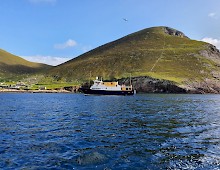
View Itinerary Gallery
Itinerary Gallery
Cruise area.
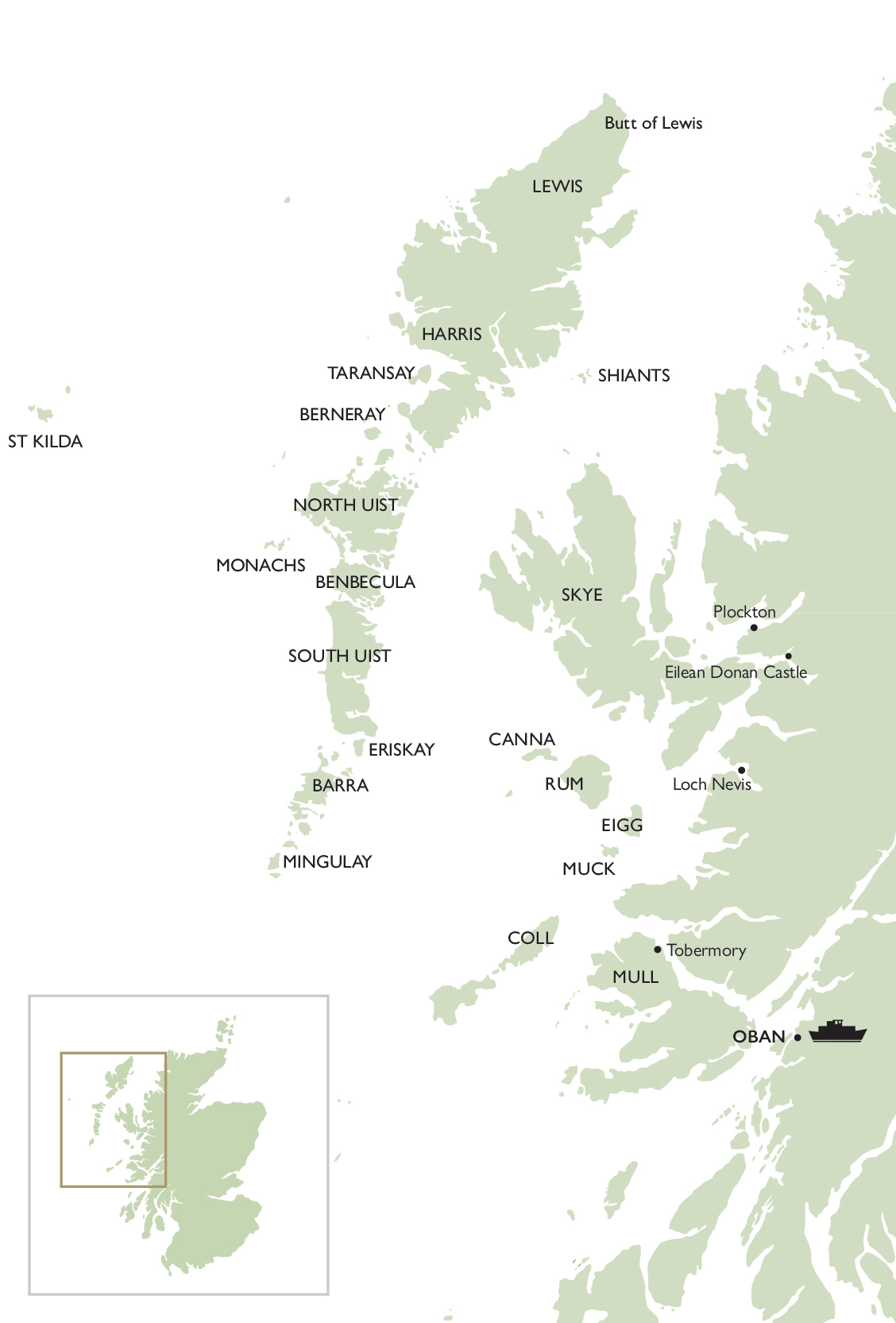
- Our Cruises
- A Taste of Argyll 3-nights
- Isles of the Clyde and the Southern Hebrides 6-nights
- Isles of the Southern Hebrides and Sea Lochs of Argyll 6-nights
- Islay and the Southern Hebrides 6-nights
- Captain's Choice 6-nights
- A Taste of the Hebrides 3-nights
- Mull and her Inlets and Islands 6-nights
- Around Mull : Wildlife Explorer 6-nights
- Isle of Skye and the Inner Hebrides 6-nights
- Skye and the Small Isles 6-nights
- Loch Ness and the Caledonian Canal 6-nights
- North West Coast Wilderness 10-nights
- Idyllic Isles of the Outer Hebrides 10-nights
- A Coastal Odyssey 10-nights
- Orkney: A Voyage Through Time 6-nights
- Enchanting Argyll: Islands, Lochs and Wildlife 6-nights
A Taste of the Hebrides is aptly named. Having tasted, one can only want more so a second trip becomes inevitable
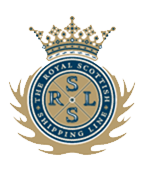
- Scottish Cruises
St Kilda and the Outer Hebrides
- 10 Night Cruise
- Argyll & Hebrides
- Edge of The World - St Kilda
- Scheduled Cruises for 2023
Magnificent, enthralling, bewitching and captivating – just some of the words that can be used to describe the breath-taking beauty that is St Kilda and its stunning archipelago.
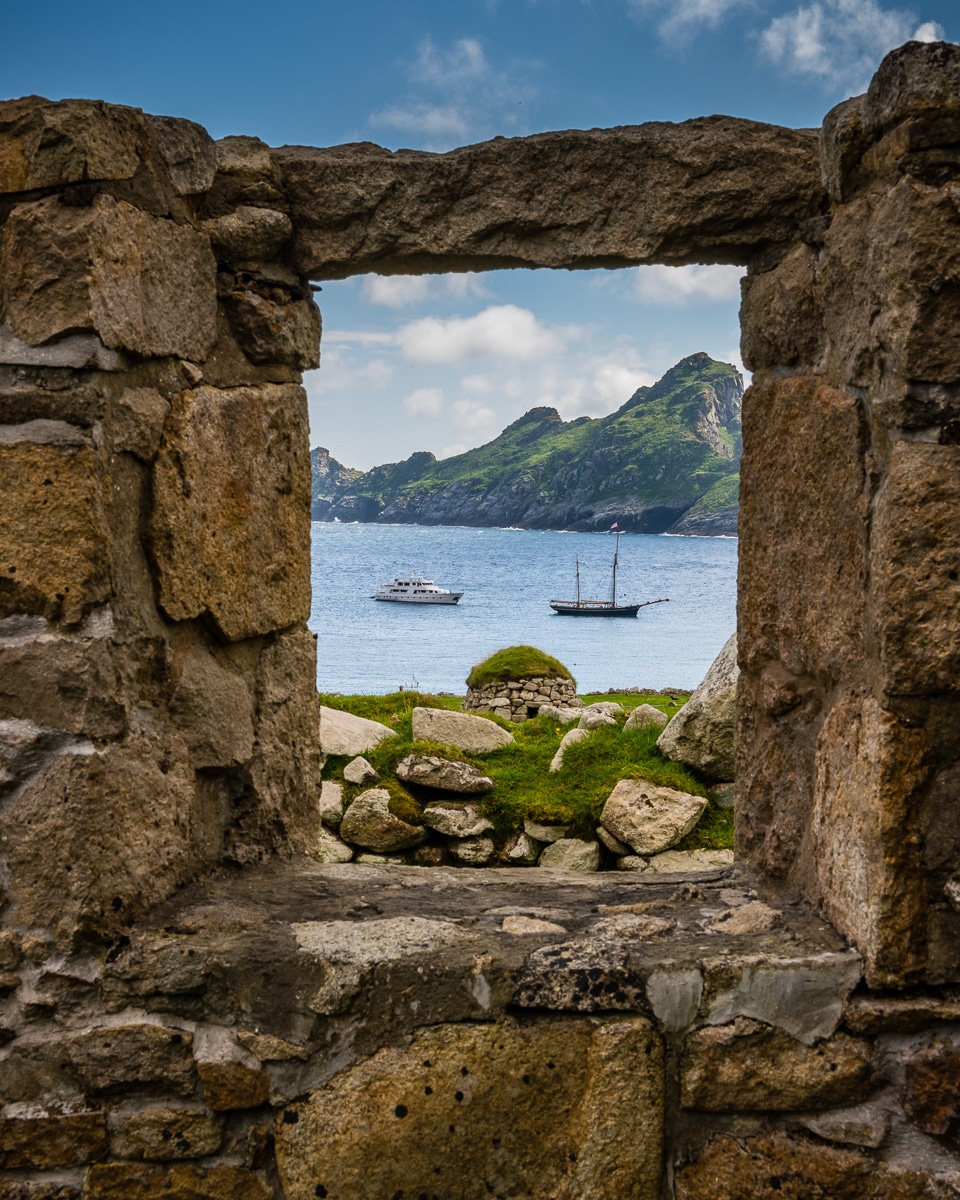
A World Heritage Site and a Site of Special Scientific Interest, the rock formations reaching out from the sea are the home to the islands world famous inhabitants – the puffins and our visit here is truly the highlight of this cruise. However, the journey to St Kilda will never disappoint as we depart from beautiful Oban, through the scenic Sound of Mull and past the bird paradise which is Canna. We visit the Isle of Barra with its turquoise waters lapping up white sandy beaches and Kisimul Castle which appears to float majestically in these waters.
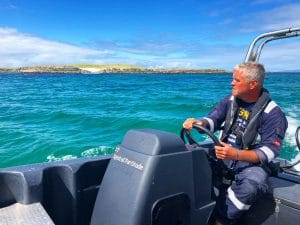
We sail on to the islands of North and South Uist, where Bonnie Prince Charlie first set foot on Scottish soil and on our return from St Kilda, we visit Harris and Lewis – passing monumental sea stacks, heavenly beaches and remote islands before reaching the impressive Isle of Skye. Sailing back down the west coast, we will see picture postcard villages, hidden bays and the best wildlife that Scotland has to offer.
Passing places, anchorages and ports
Our gateway to the highlands and islands ……. Historically a fishing and trading village until the Victorian steamers started arriving in larger numbers to this pretty village, Oban grew into a town as it became a main stopping off point for the Western Isles.
With over 300 miles of beach and coastline, the sights that you will see here will blow you away. Standing on the most southernmost tip of the Kintyre peninsular on a clear day you can see the coast of Northern Ireland in the distance.
Mull is well known for its hills and its Munro – Ben More stands at over 3,169ft and is popular with climbers and there are many beautiful walks and climbs throughout the island. Mull has been inhabited since the last ice age and the island is dotted with bronze age stone circles and standing stones and the iron age is demonstrated through crannogs and fortified duns. Duart castle is a magnificent example of medieval architecture and more recent examples of Scotlands’ clans and castle history lies at Torosay and Glengorm.
The island has a rich abundance of wildlife and otters and golden eagles are easily seen as well as occasional sightings of the white tailed eagles. Red and roe der can also be found throughout the grass and woodland.
Locals produce some wonderful produce – chocolate, cheese, smoked salmon and of course its own whisky.
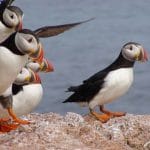
A picture perfect setting of coloured buildings down to the pier surrounded by wooded hills around the bay up to the lighthouse with its playful otters among the rocks. At the bottom of the bay is thought to remain the wreck of a Spanish galleon which fled the English fleet when she anchored in Tobermory to take on provisions. Following a dispute over payment the ship caught fire which caused the gunpowder to explode. She was supposed to have been carrying millions of gold coins when she went to the bottom but no-one has ever managed to find any significant treasure. Tobermory also has its very own chocolate factory.
Isle of Canna
The most westerly of the Small Isles and measuring just five miles by one, it is now owned by the National Trust for Scotland and is a working farm. The main harbour, which is thought to be the best of any of the Small Isles lies between Canna and the linked island of Sanday. The sky is a playground for sea eagles, golden eagles and puffins as well as peregrine falcons and merlins. On the north coast is the grave of the King of Norway at Rubha Langan-innis. John and Margaret Campbell both lived on this Isle for many years and they collected a great history of its people, with a large collection now of its traditional songs all in the Gael, folklore and the many customs which are not to be seen in the Isles today. It is great that this long heritage will not be forgotten.
As a family we have visited this amazing little place many times with its beautiful beaches, machair, hills and moors. It really is a magical place to while away an afternoon. The most southerly of the inhabited islands of the Outer Hebridies, it is a perfect combination of stunning scenery and history in one perfect location. We sail past the medieval “Castle in the Sea” – Kisimul Castle (which was leased by Clan MacNeil to Historic Scotland for 1000 years for £1 a year and a bottle of whisky) to one of the many secluded sandy bays although watch out for planes as they land between tides on the beach at Cockle Strand. Visit the ancient graveyard of Cille Bharra and its ruins of the medieval church or spot one of the other ruins that are scattered around the island.
Barra and Kisimul Castle
Kisimul Castle in Castle Bay on Barra is a 15 th century castle that was home to the Macneil. Famed for their sea faring adventures, one Macneil pushed the boat a little too far and was arrested for piracy of an English ship late on in the 16 th century. Now in the care of Historic Scotland, the castle has been lovingly restored in part and the tower house battlements offer spectacular panoramic views around Castle Bay. Sitting in the sea with its prime position this is a proud and captivating Castle.
Eriskay & South Uist
It was on the beach at Eriskay that Bonnie Prince Charlie first set foot on Scotland’s fertile shores in 1745. The beach is home to beautiful white-striped, pink sea bindweed of which the seeds are said to have fallen from the Princes pocket when he landed as it is not native to the Hebrides. The beach today is as beautiful as it was then and when you stand on the white beaches gazing out to the sea, you can easily resonate with the Bonny Princes words – “I am come home sir”. It is also the home of the Eriskay pony, a smallish but very sturdy and hardy breed of pony.
Compton Mackenzie’s bestselling 1947 novel “Whisky Galore” based on the story of the SS Politician which struck rocks of the island in 1941 and spilled a large number of its 264,000 bottles of whisky. Thousands were “liberated by the island folk before officials turned up and searched the island to retrieve the bounty as they did not have Tax on them. Today you can get a glimpse – although not a taste – of some of the few remaining bottles that were saved by the peat that they sunk into.
South Uist is home to the oldest golf course in the Outer Hebrides – Askernish which offers phenomenal views whilst taking in a round of golf. Like many of the Western isles it is an island of two halves – the east is dominated by mountains and the west is made of long lines of sandy beaches. Along the coast are the remains of a 12th century castle and on the west is the Hill of the Miracles, which in 1957 saw the erection of Hew Lorimer’s 30ft statue of the Madonna and Child, “Our Lady of the Isles”, on its slopes.
Benbecula & North Uist
Benbecula in Gaelic, is Beinn na Faoghla which means Mountain of the Ford. This is a very apt name for the island with its seemingly infinite fords and its solitary hill, Rueval, which looks over the Bonnie Prince Charlie trail which the Young Pretender once followed as he made good his escape from the Red Coat Army following the bloody Battle of Culloden.
There is an intoxicating atmosphere here, you can’t help but feel a pulling to the past with its legends in this isolated location. It is also home to Scotland’s oldest University, older than St Andrews by nearly 200-years though not now standing, the ruins are the remains of a medieval college and monastery. Nearby sits the ruins of Borve Castle where the chiefs of the Clanranald sheltered as well as the now ruined temple to St Columba. The island also is home to a 5,000-year-old burial chamber and the stone circle called Finn’s People, one of the finest on the island.
With a splendid mixture of fresh and salt water lochs adorned with miles of white sandy beaches, this area is a paradise for birdwatchers and animal lovers alike. A unique opportunity is had to see the only short eared owl that appears in daylight and the ghostly white hen harrier swooping gracefully down to capture its prey. Witness otters as their families’ frolic or better still the elusive grey and brown corncrake one of Europe’s most endangered species, as it sings for the evening serenade. Machair dresses the beaches where wading birds nest and leads to the RSPB Nature Reserve.
Your imagination and heart cannot help but be captivated by this location, with its amazing and tragic stories many of which demonstrate the power of the human spirit and its quest to survive.
For centuries the St Kilda clutch of islands was under Clan MacLeod and their traditions included that no man could marry until he could weave a rope out of horsehair so that he could maintain his wife by climbing to hunt the seabirds who live on the cliffs. At one time it was estimated that each person on St Kilda ate 115 fulmars every year. And in 1876 it was said that the islanders took 89,600 puffins for food and feathers.
Today, St Kilda is the UK’s only UNESCO Dual World Heritage Site and National Nature Reserve and one of only 29 global locations to be awarded World Heritage Status for both natural and cultural significance – putting it on a par with Machu Picchu and Mount Athos
These archipelagos with their exceptional cliffs and sea stacks, are rich in wildlife and form the most important seabird breeding station in north-west Europe. The cliffs of St Kilda are home to an estimated 1 million sea birds including puffin, fulmar, gannet, shearwater, petrel, kittiwake and shags. It truly feels like you are on the edge of the world.
St Kilda is one of the best places in Britain for diving because of its clear water and its submerged caves, tunnels and arches – all of which give the diver a rich experiences of the marine life on offer.
The tragic evacuation of this island in 1930 has meant that St Kilda has one of the most extensive groups of vernacular building remains in Britain. The layout of the 19th-century village remains to this day and the story of the evacuation and the build up to it brings a shiver to the listener. As you walk through the abandoned village and houses left in mid flow, you expect to hear echoes of the everyday life that they left behind.
The legends, stories and folklore of St Kilda are plenty and here are just a few of our favourites:
Lover’s Stone
Before the young men of St Kilda could marry, they had to prove they were able to provide for a family by climbing the rocks to catch birds for food to test their agility, balance and patience. They had to balance on their left foot over the iconic edge of the protruding rock, place their right foot in front, bend down and make a fist over their feet. This demonstration would show that they could hunt and thus feed a family before getting into a position of having a family to feed and no way of feeding them!
The mailboat
The first mailboat was sent out as a distress signal in time of famine by John Sands, a journalist, who was stranded on St Kilda during winter of 1876. A small wooden ‘boat’, containing a letter, usually sealed in a cocoa tin whilst a sheep’s bladder acts as a float. A St Kilda mailboat is sent by St Kilda work parties as part of the ritual of visiting St Kilda. They are carried by the Gulf Stream and can reach far off places such as Scandinavia. You will have the chance to send your very own mailboat, courtesy of The Royal Scottish Shipping Line.
Village Bay, Hirta
Smallpox Epidemic
After visiting Harris in 1726 a St Kildan caught smallpox and died from it. His clothes were returned home to St Kilda in 1727, but these inadvertently brought the disease with them. Killing most of the Islanders, only one adult and 18 children survived the outbreak on Hirta. However, three men and eight boys managed to escape the disease as they had been left on Stac an Armin with no means of transport back, to collect gannets. There was no one left to fetch them back. They were eventually rescued by the Steward an amazing nine months later!
The Lady Grange
Formerly the wife of the Scottish Advocate, after separating from him, she spread vicious rumours of him being a Jacobite sympathiser. In revenge he imprisoned her on St Kilda in 1734. Eventually she managed to alert friends to her circumstances and they rescued her before taking her to the Isle of Skye where she died in 1742. A large cleit in the Village is traditionally said to be the house where she was held prisoner.
The Great Auk
The Great Auk, – Scotlands’ equivalent to the Dodo was once a familiar sight to sailors in the North Atlantic and was a frequent visitor to St Kilda before becoming extinct in 1844.
Sitting at the North West corner of the Western Isles, Harris is actually joined to the Isle of Lewis. Home to the ferry boat to Harris. To the west of the island are some of the most tantalisingly inviting beaches framed by sandy machair dunes whilst the north couldn’t be more in contrast with its rugged, treacherous and mountainous terrain. The isolated east coast has some of the oldest rocks in the world and these 3,000 million years old rocks help to form the islands many bays. To me, this is one of the purest places on earth with beaches of white sparkling sand and the sea that looks amazing in any light.
Not surprisingly, this beautiful coast was used to film the BBC Series Castaway 200. At the southern tip of Harris lies the 16th Century church of St Clement. Designed by Alasdair Crotach so named for the word meaning hunchback from a sword injury, the church boasts three tombs carved in almost striped black gneiss depicting knights. For the brave, a steep climb up almost vertical spiralling steps offers an amazing view of the island. This island is full of pretty little houses and famed for its collection of Harris Tweed shops, selling the Isles own produced Tweed – perfect for that authentic gift from the Gaels.
When stepping ashore, you feel as if you live in a world of beautiful contradictions as you view ancient stone circles alongside the modern way of life and hear a mix of both Gaelic and English both spoken with ease.
This landscape comes to a dramatic climax at the Butt of Lewis where these imposing cliffs are home to kittiwakes, shags and black guillemots. Southwest Lewis has some beautiful beaches and the Uig hills, home to red deer and several pairs of breeding golden eagles. Further along you will find the sea stacks at Mangersta, what looks like a range of high peaked mini mountains pushing their way up from the sea. It is a bird lover’s paradise with redshank, greenshank, oystercatchers, curlew, ringed plover, dunlin, shel ducks, red-breasted merganser and merlins can be seen speeding over the moor in pursuit of meadow pipit or wheatear.
The largest town in the Outer Hebrides, is home to a population of around 8,000 over half of whom speak Gaelic. Until recently, the Sabbath was strictly observed with ferries only starting to run in 2009.
The town has a strong Viking history and due to its natural sheltered harbour it grew rapidly and was a natural stopping off point for travellers to and from the mainland. Tragedy struck in 1919 though when the Lolaire sank at the entrance to the harbour – killing over 200 men who were returning safely from the war in 1919.
The town is also home to Lews Castle which has just undergone a major reconstruction and houses a museum
Shiant Islands
The Shiants have one of the largest puffin colonies in the world – around 240,000 nest among the cliffs here every year, add to that the tens of thousands of guillemots, razorbills, the thousands of fulmars and kittiwakes and shags and this has to be the greatest place to watch birds in the world.
Isle of Skye
The stunning approach to the Isle of Skye and its impressive black Cuillin hills and their dramatic backdrop offers spectacular scenes of beauty from every angle. Skye is one of the most magical and beautiful places to visit from the sea with its mystical Fairy Rock Pools, and its famed Old Man of Storr, an impressive 165ft high column of rock along with its Coral beach to name just a few of the worthy sights
The remains of the headland fortress of Duntulm Castle perfectly frame the view from the tip of the Trotternish peninsula and further south lies the intriguing Kilvaxter Souterrain. To the North West lie two further peninsulas, Duirinish and Waternish – both worthy of exploration for both their beauty and also the ruin of Trumpan Church which is famous for “The Battle of the Spoiling of the Dyke”.
Tokavaig on the coast sits on a small pebbly beach under the watchful eye of the ruins of Dunscaith Castle. Legends tell that the original castle was built in a single night with the help of a witch. This headland was also said to have been the location for the legendary “School for Heroes” run by the Celtic warrior queen, Scáthach, whose name is reflected in that of the castle.
Meaning “The Sanctuary” in Gaelic the area is extremely isolated yet beautiful. Applecross was only accessible by boat until the early 20th century and today it is a very popular place to visit. Historically, the settlement is linked with St. Máelrubai, a monk who came to Scotland in 671AD from the major Irish monastery. He founded Aporcrosanin 672 in what was then dangerous Pictish territory. The early monastery is located around the site of newer parish church built in 1817. A large, unfinished cross-slab standing in the churchyard and three extremely finely carved fragments of another preserved within the church are evidence of the early monastery.
Kyles of Lochalsh
The gateway to the Isle of Skye. Lochalsh village has some beautiful whitewashed cottages that you can see from the water and fantastic views of the world famous Skye Bridge and the Cuillin Range. The surrounding landscape is a haven for deer – both red and roe, as well as golden eagles and otters.
The Small Isles
Just south of the Isle of Skye lies an archipelago of four small islands – Eigg, Canna, Rum and Muck. Made up of a column of lava, Eigg has a bloodthirsty history of clan rivalry that ended in the death of the islands entire population. Rum is a national nature reserve and is one of Britain’s last wildernesses and is home to the Manx Shearwater that glides straight winged along the surface of the surrounding coast. On the smallest island Muck, a dagger and a number of burial cairns have been found which date back to the Bronze Age whilst thanks to the Gulf Stream its waters support a number of rare crabs, small purple sea urchins, and the only British Coral, the “Cup Coral”. Canna is the archetype of Hebridean islands and displays, evidence of the once great volcanic forces which have been at work in the earth’s crust. Wildlife is abundant here both on land and sea.
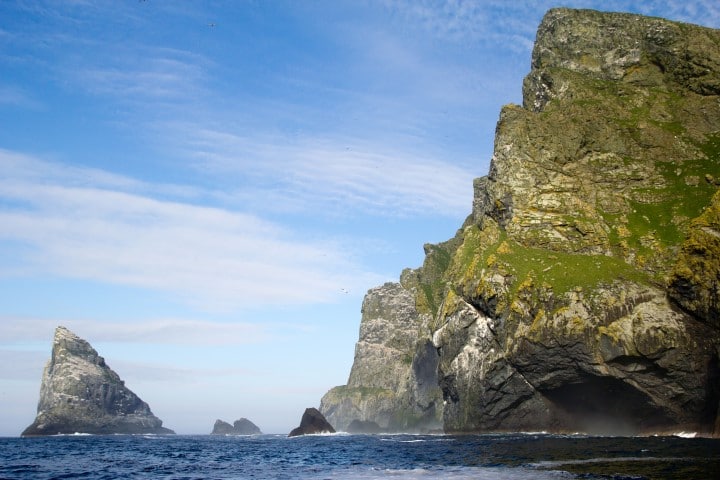
Tour Reviews
I loved this cruise! The booking process was simple and the staff very helpful, we got some great weather which was also a bonus. One less item on the bucket list!
Just fantastic cruise, wonderful scenery, friendly ports, most helpful and pleasant crew and the most gorgeous food have ever tasted. Most of the food was local sourced. The yacht is very comfortable, clean and spacious. Would highly recommend.
Thank you very much for a wonderful trip and an experience we will never forget.
We just wanted to let you know how really wonderful our cruise of the Western Isles was and how much we enjoyed it all. The Spirit of Fortitude was absolutely luxurious and the scenery more splendid than we had ever imagined but we reserve an even higher praise for the terrific crew you have put together. They looked after us every step of the way, nothing was too much bother and the food was outstanding. When we said goodbye on Tuesday it was like farewelling friends.
Nothing was too much trouble; all crew were attentive and friendly. We were looked after both professionally as well as with great care. Chef provided a string of excellent meals along the whole trip. Craig and Mark did all they could to keep us safe and help us enjoy our time aboard and ashore. The captain did everything with good humour, and successfully traveled though the night to ensure we arrived at St Kilda, which was most memorable. Our cabin was very comfortable with great storage space and the overall public spaces where very superior as well as comfortable. We would rate the whole experience excellent and would not hesitate to recommend to our friends.
Captain was highly committed to getting us to St Kilda. The crew as well as having high regard for our safety also spent a lot of time pointing out various places and the wildlife. This was all topped off of course with the high quality of meals and vert well balanced. The overall areas within the boat were of very good quality with ample space, we would recommend this trip to our friends.
Our Captain did an excellent job in sometimes difficult conditions with regards to the weather. The crew were always helpful and seemed to have everything under control. Our steward was charming and very hard working and does a great job in the table settings. Everyone enjoyed Chef’s food, he was also very diligent with food allergies which we so appreciated. Everyone was extremely warm, friendly and helpful. The vessel was great! Both inside and out with good windows upstairs and very elegant decor. We found our cabin incredibly comfortable with lots of space for clothing etc. We both very much enjoyed the holiday with the highlight being St Kilda as well as the other guests and crew.
Leave a Review
Cancel reply.
You must be logged in to post a comment.
You May Also Like
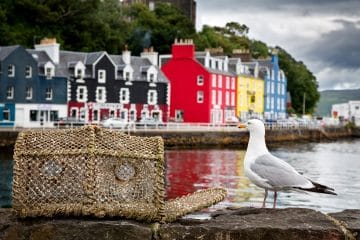
The Arisaig Route
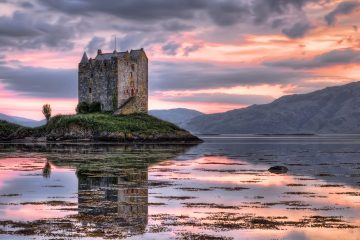
Loch Ness & The Caledonian Canal
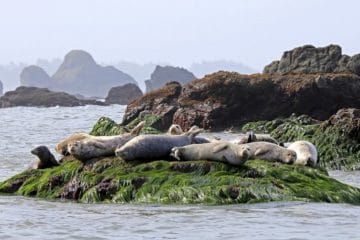
Isle of Skye & The Inner Hebrides
Click Here to Call : +44 (0)7871 463755
Explore Scotland from Sea to Shore
Join us for the best all-inclusive Scottish island and wildlife adventure cruises aboard the Hjalmar Bjørge from Oban around the beautiful Inner and Outer Hebrides.
Wildlife-Watching Adventures
The Hebrides are rich in eagles, seals, otters, gannets and puffins. But did you know they are one of the best places in Europe to spot whales, dolphins and porpoise too?
An Experience to Remember
With itineraries to suit all tastes, our Scottish island and Hebridean cruises will create long-lasting memories sure to bring a smile to your face for years to come.
Make the most of your holidays
Hebridean Adventures Cruises
Please take a look at our short video which will give you a flavour of who we are and why you should join us for a Scottish cruise adventure around the Inner and Outer Hebrides, the West Coast of the Highlands plus occasional special destinations too. We encourage you to share this video with your friends and family and make up a small group. We also offer Private Charters for your own unique getaway around the islands. Get in touch today!
CHOOSE YOUR ADVENTURE
Scottish Scenic Wildlife Cruises and Tours
Hebridean Adventures' experiences start with our all inclusive scheduled cruises from Oban or private charter cruises around Scotland's West Coast Highlands and Hebridean Islands, or even further afield on occasion. We look forward to welcoming you aboard the MV Hjalmar Bjørge in Oban (also trading as The Northern Light Cruising Company ).
For wildlife-watching day trips you can also enjoy an amazing day exploring the Isle of Skye with our sister company SKYEFARI .
Click the images below to view more details

Subscribe to our newsletter
We'd love to keep you up to date with the latest news and updates from the world of Hebridean Adventures and SKYEFARI 4x4 Wildlife Tours.
You can of course unsubscribe at any time - there is always an easy link for you to do so.
See what previous guests have said about us...
Latest news and reports.
Have a quick read of our latest blog posts below or choose the Blog option here or in the menu above to browse through them all.

Thirty Years of Adventures in Search of the Past - The Outer Hebrides
Marc Calhoun's new book sharing three decades worth of adventures to the fascinating islands of the Outer Hebrides, filled with history and amazing sights.

Chris Packham's Birdwatching Guide - From Beginner to Birder
A review of Chris Packham's brand new book about birdwatching.

Hebridean Whale and Dolphin Trust's Boat Operator Celebration
We recently attended HWDT's Boat Operator Celebration last week at SAMS in Oban. A great gathering of our fellow small-ship cruise operators.
Our affiliations and partners
We are proud to be associated with the following tourism, conservation and other organisations. Please take a look at our Green & Sustainability Page for full details of all our commitments and partnerships.

Browse our Scottish cruises ...
Please use the drop-down search filters below to view the cruises that match your preferences (or leave them empty to search for all cruises).
You can select one of our boat names in the first "subcategory" section.
Get the latest news and updates.
Office Address: Hebridean Adventures Ltd, Tullielarach, Tulliemet, Pitlochry, PH9 0NZ, Scotland.
Contact: [email protected] / +44 (0)7871 463755
Enquiry form
- Scottish Cruises
- The Cruises
- Special Offers
- Cruise Calendar 2024
- Cruise Calendar 2025
- Cruise Calendar 2026
- Enquire Now
- Special Cruises
- Private Charter
- Family Cruise Holiday
- Guided Wildlife Cruises
- Creative Writing Cruises
- Art Cruises
- Photography Cruises
- Land and Sea Tours
- Scottish Island Golfing
- Our Vessels
- St Hilda - an ex-Tall Ship
- Seahorse II - an ex-Norwegian Ferry
- Gemini Explorer - an ex-Cruising Lifeboat
- Speideren - an ex-Norwegian Rescue Ship
- Your Holiday
- Menus Afloat
- Holiday Tips
- Travel Arrangements
- Sustainable Tourism
- Terms & Conditions
- Things To Do
- Things To Do In Scotland

--> UK: +44(0) 1631 564121
+44(0) 7984 316718
--> US: +1 (800) 281 4980
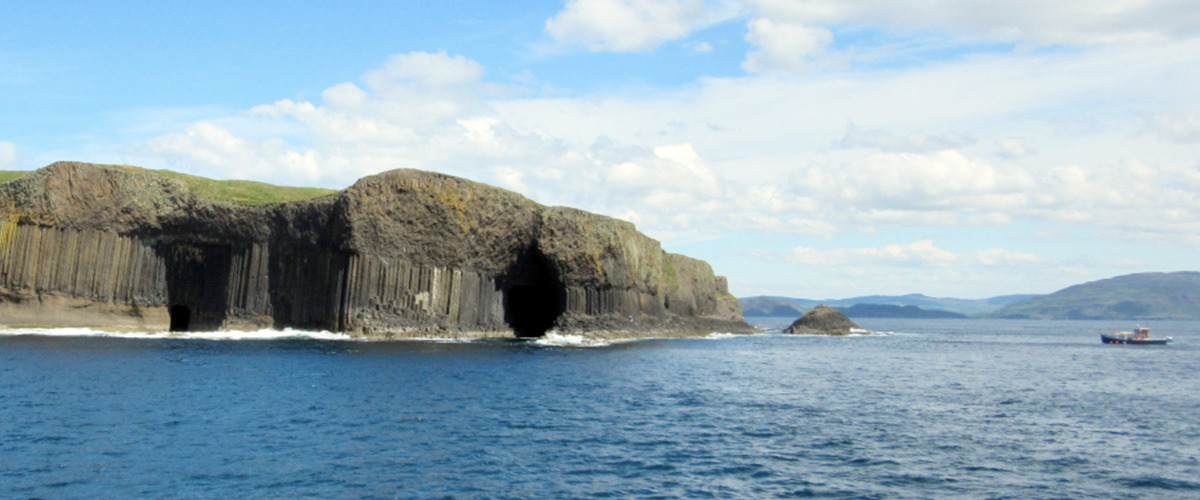
The Scottish Cruises
Spectacular Hebridean cruises aboard our small ships: St Hilda, Seahorse II or Gemini Explorer. Join us aboard our sea adventure vessels and cruise the world famous Sounds that separate the many isles of the Outer and Inner Hebrides and Argyll. We travel against a majestic backdrop of white-shell sand beaches, high mountains and the wild forests of the west coast of Scotland.
Each trip is a unique Scottish cruising holiday experience with your own dedicated skipper and chef. Come as a family or choose to be part of a friendly group of solos and couples or alternatively book the whole boat .
On some of our cruises we are delighted to offer complementary activities such as a visit to the famous Iona Abbey on our ' Mull Odyssey ' cruise.
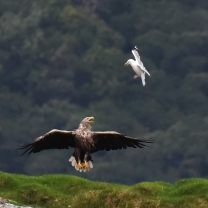
Southern Hebridean Wild Isles: Islay, Jura, Luing and Shuna
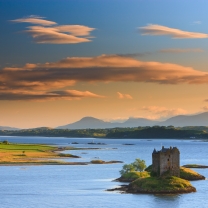
The Sounds of Mull and Linnhe Wildlife Cruise
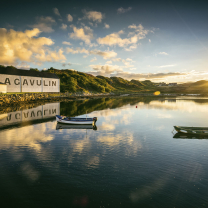
Hebridean Cruise: Wildlife & Malt Whisky
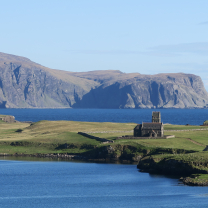
Isle of Mull and Small Isles Explorer
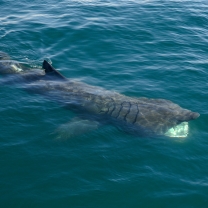
Island Cruising: Treshnish Isles, Staffa, Iona and the Small Isles
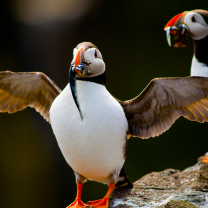
Mull Odyssey Cruise: Staffa, Iona and the Ross of Mull
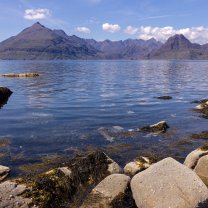
Scotland's Wild Isles: Isle of Skye and the Small Isles
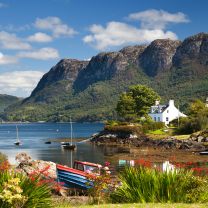
The Magical Outer Hebrides, Skye and Shiant Isles
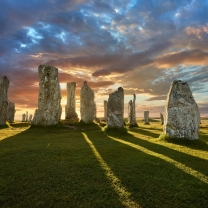
The Outer Hebrides Wildlife Explorer: Lewis and Harris
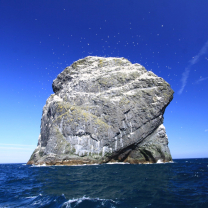
St Kilda and the Shiants
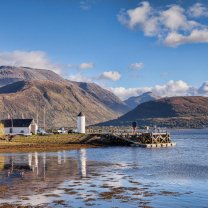
Loch Ness and the Caledonian Canal Cruise (west to east)
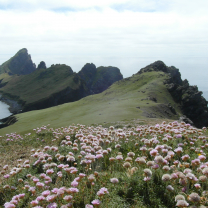
St Kilda: A Wildlife Cruise to the Outer Hebrides
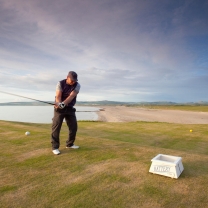
Scottish Island Golfing: Whisky and Wildlife
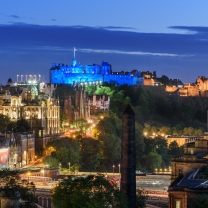
Scotland by Land & Sea
Subscribe to our newsletter.
Insert your e-mail address below to be the first to hear about our EXTRA special cruise offers
Reasons to book
- Extraordinary wildlife
- Skipper and chef included
- Hoist the sails
- Great value for money
- Cruises through Scottish Canals
- Maximum of 11 guests per cruise
- Breakfast, snacks, lunch and dinner
- Organised whisky tour for free
- A perfect adventure for all ages
- Art & photography cruises with free specialist tutors
- Cruises with wildlife guide for free
Care, consideration and conviviality in abundance. Knowledge considerable. The crew were exemplary. I will be back! Iain, September 2024
- Scottish Island Cruises on Hebridean Princess
- Lord of the Highlands
- Cruise Calendar & Offers

- Best No-Fly Cruises from the UK
- Genuinely All Inclusive Cruising
- Cruise Logs of Hebridean Princess

Home » Welcome to Hebridean Island Cruises


Luxury Scottish Cruises
Enjoy a luxury Scottish cruise as Hebridean Princess steams majestically into a distant loch, dramatically ringed by mountains, and dine at anchor in the spectacular sunset of a far-flung bay.
Hebridean Princess combines the atmosphere of a fine country house with her renowned level of service and attention to detail that guests have come to expect over the years. This, along with knowledgeable on board guides, makes for a memorable experience. Our boutique, luxury cruise ship carries just 48 guests with a hand-picked crew of 38.
Our all inclusive, no-fly cruises offer the very best way to experience Scotland from the water.
View the Hebridean Princess CRUISE CALENDAR for dates, itineraries and prices and click here for our latest CRUISE DEALS .
SIGN UP TO OUR NEWSLETTER TO KEEP ABREAST OF SPECIAL OFFERS AND EVERYTHING THAT HAPPENS ON BOARD AND ASHORE
QUOTE ONLINEFIVE to SAVE 5% ON ANY HEBRIDEAN PRINCESS CRUISE
Call 01756 704704 for more information or to book your luxury Scottish cruise.
Purpose built to transit the historic locks of the Caledonian Canal following a multi-million pound rebuild, Lord of the Highlands is the latest addition to Hebridean Island Cruises’ fleet of boutique cruise ships in Scotland.
Inspired by the success of her larger sister, Hebridean Princess, Lord of the Highlands continues the Hebridean tradition of providing the best cruise holidays afloat. The convivial company of just 36 fellow guests ensures that a relaxed house party atmosphere is typical on every cruise.
View the Lord of the Highlands CRUISE CALENDAR for dates, itineraries and prices.
QUOTE ONLINE150 to SAVE £150 ON ANY LORD OF THE HIGHLANDS CRUISE
Call 01756 704704 for more information or to book your boutique cruise to Scotland.

Newsletter Signup
Keep up to date with our latest news and offers

- Cruise Calendar and Offers
- Hebridean Princess Cruises
- Save with our Scotland Cruise Deals
- Cruise Logs
- Contact Hebridean Island Cruises
Stay up to date with news and offers by signing up to our newsletter.
The Scottish Isles
Highlights of the hebrides.

Cruise Overview
British isles cruise – the scottish isles – highlights of the hebrides.
Discover highlights of the Hebrides and Scottish Highlands, including Fort William in the shadow of Ben Nevis, on this expedition cruise from Glasgow (Greenock).
Experience rugged landscapes, remote beaches and historic towns in the Inner and Outer Hebrides, and marvel at spectacular Highland scenery on the mainland.
Seek out Atlantic seabirds and marine life as we explore the Sound of Mull, Vatersay in the Outer Hebrides, Islay and more.
Heather, history and highland scenery
From Glasgow (Greenock) you’ll voyage to the wild and remote Hebridean Islands and discover rugged landscapes draped in heather, white sand beaches and picturesque historic towns. Heading towards Fort William, you’ll be immersed in awesome Highland scenery featuring soaring mountains and glacier-carved valleys.
Ancient sites, undisturbed wildlife and unique whiskies
From Arran to Mull and Islay, you’ll visit ancient castles and standing stones and taste Scotland's cultural notes with whisky. On your journey, you’ll encounter birdlife like puffins and eagles, and as you gaze over the sea, look out for the dolphins and basking sharks that thrive in these cool waters.
Know before you go
Practical information you need to know
- Expedition Health & Safety
- Travel Requirements & Medical Forms
- What to pack?
- Frequently Asked Questions About Life on Board
Health and Safety
Health & Safety Onboard
The safety of our guests, our employees, and the communities we visit is our top priority. This is why we have partnered with leading experts in health and safety to design and implement protocols/procedures across our expedition fleet.
Searching for
Available dates.
We'll help you plan where to go, when to visit and how long to stay

Embark from Glasgow (Greenock)
Start in Scotland's stylish city of culture
A former industrial powerhouse, Glasgow has reinvented itself as a cultural hotspot, packed with museums, galleries and parks. Discover the splendid Art Nouveau architecture of Charles Rennie Mackintosh before your expedition cruise begins.
You’ll embark in Glasgow (Greenock) where MS Spitsbergen, one of our smaller vessels purpose-built for close-up exploration, will be waiting for you. Get to know the ship before meeting the Expedition Team – your guides for the adventure ahead – and enjoy your first dinner aboard as we set sail.

Beautiful Isle of Arran
Enjoy wildlife spotting on Arran
Welcome to the Isle of Arran, known for its heather-cloaked landscapes. Why not try a hike with views of the craggy peaks of Goat Fell and see if you can spot Scotland’s ‘Big Five’: the Golden Eagle, red deer, red squirrel, otter and harbour seal, all of which can be found on Arran.
Explore the woodland and gardens of Brodick Castle, and marvel at the Neolithic treasures and huge upright slabs at the Machrie Moor Stone Circle. Your stop wouldn't be complete without a visit to the Isle of Arran Distillery and a taste of their distinctive malt.

Expedition day
Explore the tranquil southernmost islands of the Outer Hebrides
Today, we’ll explore the southernmost islands of the Outer Hebrides.
We’ll attempt a nature landing on the white sand beaches of Vatersay, located at the beginning of the renowned Hebridean Way. The mighty wind and waves of the Atlantic have carved sheltered harbours here, allowing settlements to arise as far back as the Neolithic period. Explore the rich history and admire the tranquil beauty of this tiny island, before heading south to remote Mingulay.
Abandoned by its resident population a century ago, Mingulay is home to some of the largest bird colonies in the Hebrides. Puffins, guillemots, fulmars, kittiwakes and more make their nests across the island, including on the towering Carnan Cliffs, a protected breeding area. If conditions allow, we’ll take our small expedition boats around the island on the lookout for some of these magnificent birds.

Mull’s Colourful Fishing Port
Get ready for the dreamy beauty of the Sound of Mull
Brightly coloured Georgian houses line the waterfront in the picturesque fishing port of Tobermory on the Isle of Mull. Learn about the local heritage at the Mull Museum, try a dram of local whisky, stroll around the loch in Aros Park or pay a visit to the Baliscate Standing Stones.
The Isle of Mull is a magnet for birders. It has the highest breeding density of Golden Eagles in Europe, and White-tailed Eagles can often be seen soaring above the coast. We may also explore Loch Sunart, a Marine Protected Area known for otters, dolphins and porpoises.

Britain’s outdoor capital
S ee why Fort William is an outdoor adventure hub
After sailing into Loch Linnhe, we arrive at Fort William. The town is known as ‘Britain’s Outdoor Capital’ and it’s a magnet for hikers, bikers, climbers and skiers. As you’ll see, it’s set amid some spectacular Highland scenery.
The town’s whisky distillery offers its take on the national tipple, and a scenic walk awaits you at Glen Nevis. Nearby is the beautiful valley of Glen Coe, which was carved out of the landscape by glaciers and volcanic activity. Glen Coe is designated a National Scenic Area, but also has a dramatic history that’s integral to the story of Scotland.

Islay's whisky and nature
Fire up your spirit of discovery on 'whisky island'
Islay, the ‘Queen of the Hebrides’, is the southernmost island of the Inner Hebrides, with rugged uplands and coastline . The island is the proud home of world-famous peaty single malts – but that's far from the only reason to visit.
Islay is a wildlife haven, home to over 200 species of birds, including oystercatchers, gannets and Golden Eagles. From its sandy beaches, you can sometimes spot dolphins and basking sharks.
Port Ellen is the gateway to three of the island’s nine distilleries. Of course, no trip to Islay is complete without a 'wee dram' from one of these famous and historic whisky producers, including Laphroaig and Ardbeg.

Back to Glasgow (Greenock)
Experience the culture of Scotland's cities
Your adventure to the wild Scottish Isles ends back in Glasgow (Greenock).
Lying on the shores of the Firth of Clyde with views across to the high hills of Argyll, Glasgow’s impressive fishing and shipping heritage is manifest in the Victorian architecture of the west end of town. It’s well worth exploring this area some more if you have time before you head home.
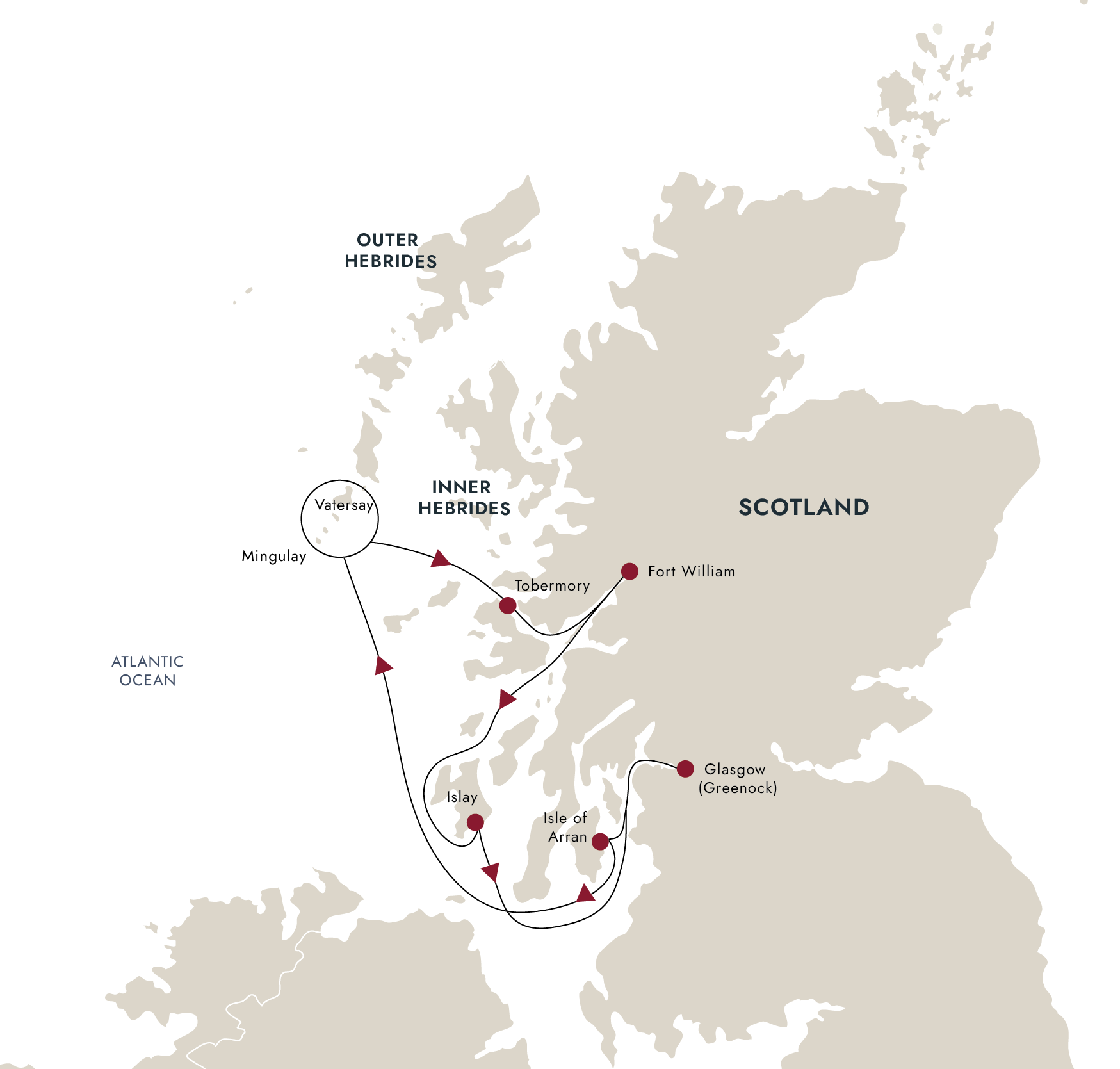
What's included
Expedition Cruise
- A stay in a cabin of your choice
- Daily breakfast, lunch and dinner
- Wine, beer and spirits available at meals and throughout the day and evening (subject to licensing laws, excludes premium drinks)
- All day coffee, tea and soft drinks
- A complimentary water bottle to refill on board and take home
- A polar expedition jacket, a backpack, or another piece of HX kit
- Professional photos from your trip taken by our onboard photographer
- Complimentary Wi-Fi. Please note, streaming is not supported
- Use of sauna, hot tubs, fitness room, lounges and more
- Gratuities included. Fantastic service is standard at HX – though if you’d like to leave something extra, it’s always appreciated
- Range of included activities
Onboard Activities
- In-depth lectures and discussions hosted by experts on the Expedition Team
- Full access to the ship’s Science Centre
- Citizen Science Programme allows guests to assist with ongoing scientific research
- Professional onboard photographer gives tips and tricks for the best landscape and wildlife photos
- Informal gatherings with the crew for daily briefings
Landing Activities
- Escorted landings with small expedition boats
- Loan of boots, trekking poles and all equipment for activities
- Expedition photographers on hand to assist you
- All planned activities are subject to weather conditions
- Excursions and activities are subject to change
- Please make sure you meet all entry and boarding requirements
- Depending on your flight times, an additional overnight might be needed (not included)
What's not included
International flights
Travel insurance
Luggage handling
Optional shore excursions with our local partners
Optional small-group activities with our Expedition Team
Special offers
Expedition exclusive cost savings and rare opportunities.
* Certain offers may not be combinable, up to two savings opportunities except where noted otherwise
Save Up to 20% on All-Inclusive Expeditions in 2025/26
Discover your all-inclusive adventure to Antarctica, Galapagos Islands, Greenland and more
52 days left to take advantage of our best price guarantee
Set sail in style with our limited-time suite offer
Save an additional 5% when you book a suite before 23 December 2024.
93 days left to take advantage of our best price guarantee
Excursions & Activities
Learn more about what you can experience when going with us
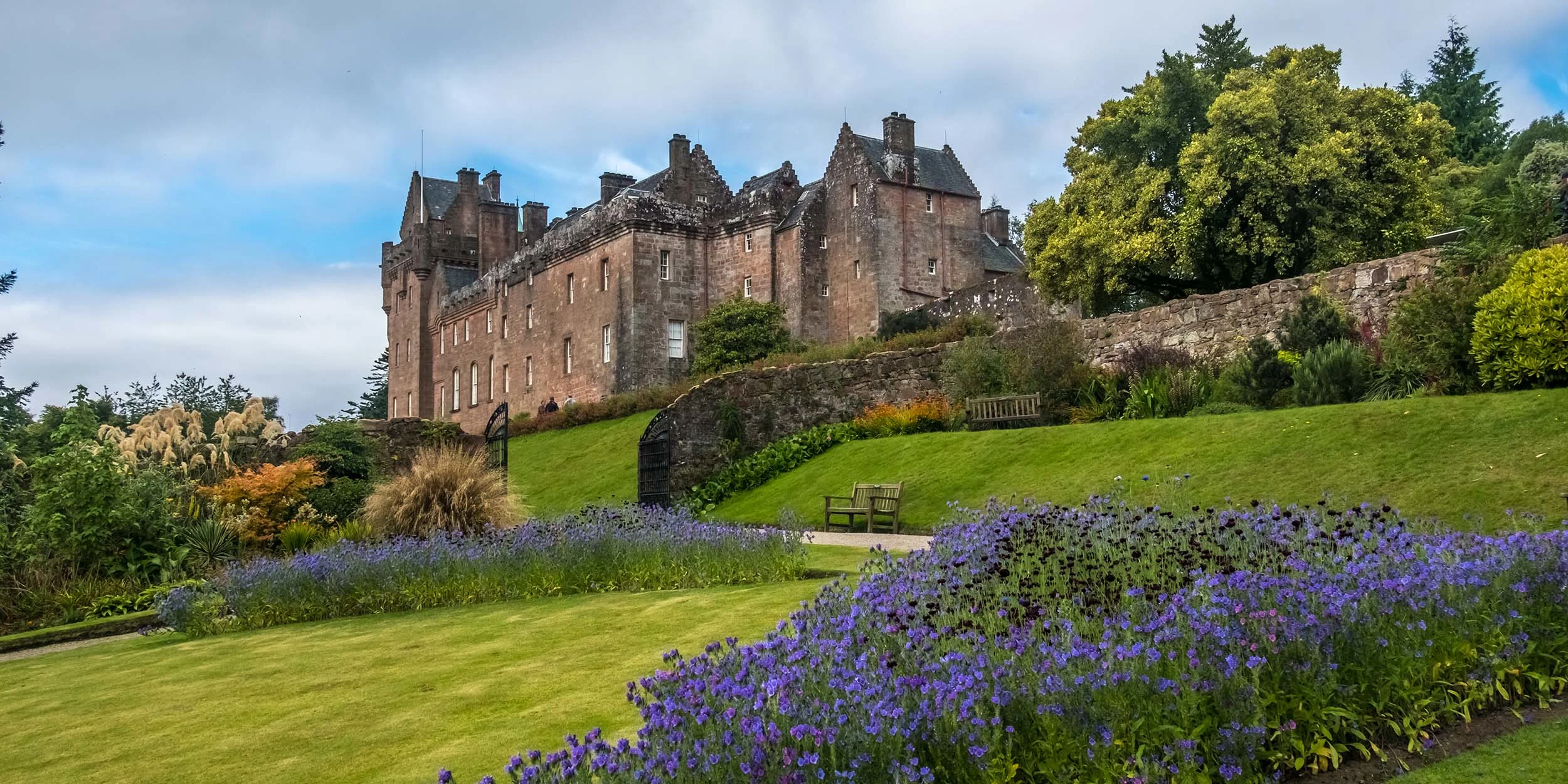
Brodick Castle & Gardens
Explore the stunning landscaped gardens and country park of a Victorian- era island castle.
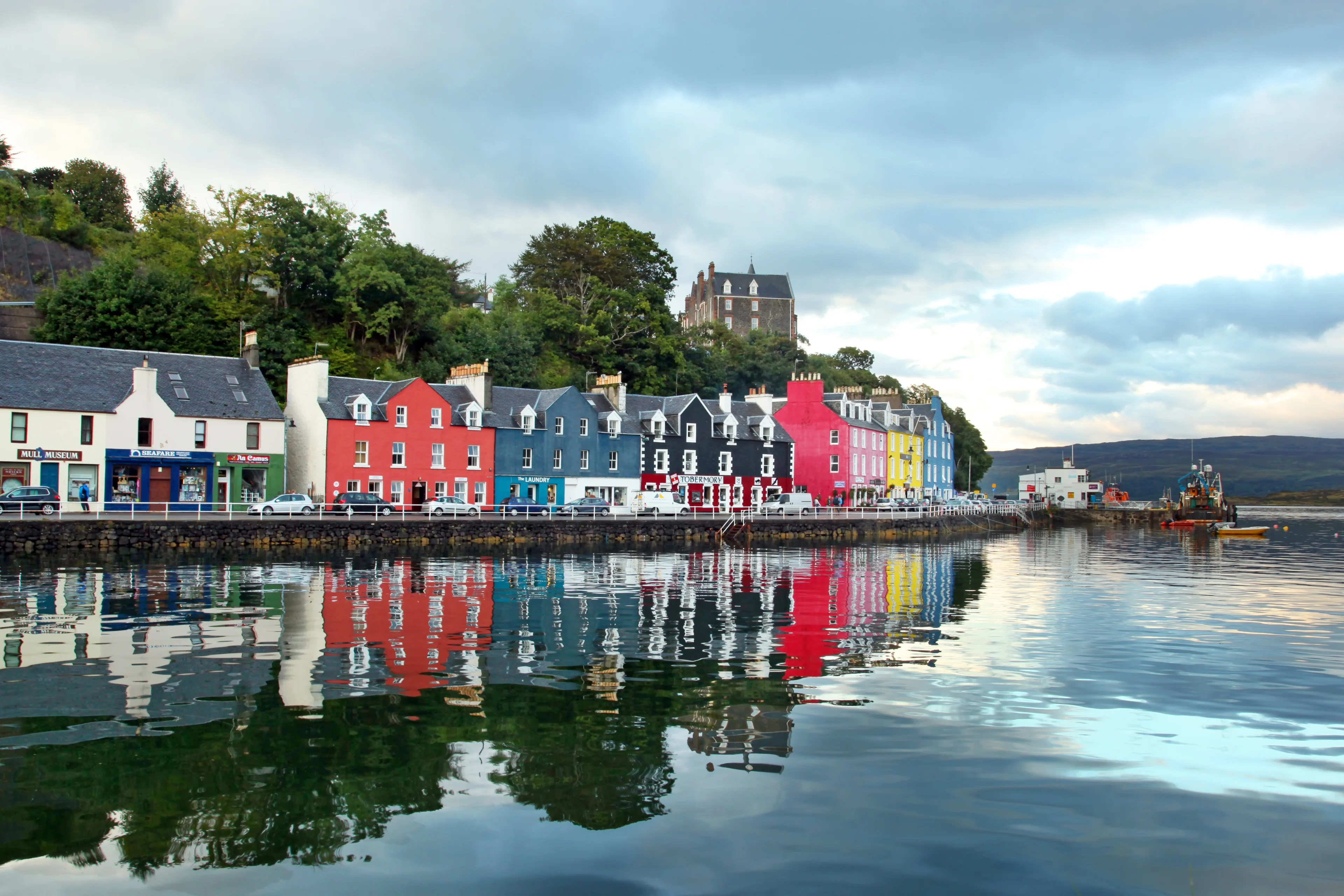
Tobermory - Town Walk
Discover Tobermory, the colourful capital of Mull, on a guided walking tour with free time to explore.

High in the Nevis Range
Enjoy a scenic gondola ride from Fort William to Aonach Mor with dramatic Highland scenery.
Pre-post programmes

Discover Spectacular Scotland (Pre)
Discover serene lochs, a charming Scottish village, and the iconic Stirling Castle on this 3-day adventure.
Related cruises
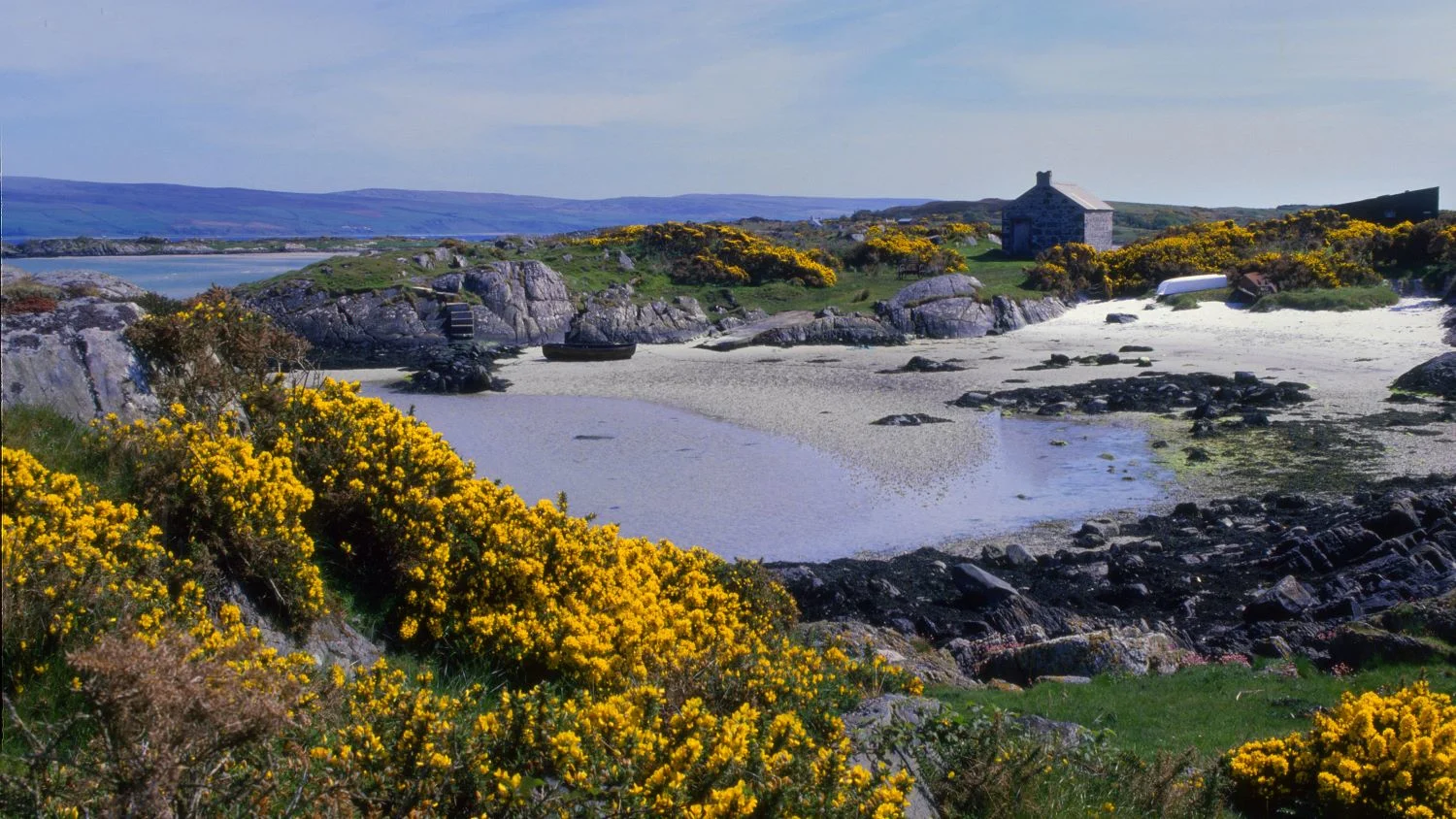
The Scottish Isles – Island Hopping in the Hebrides
MS Spitsbergen

Voyage to Iceland — Windswept Isles of the North from Hamburg to Reykjavík
MS Fridtjof Nansen

Iceland Circular Saga — Hamburg to Reykjavík via Windswept Isles of the North
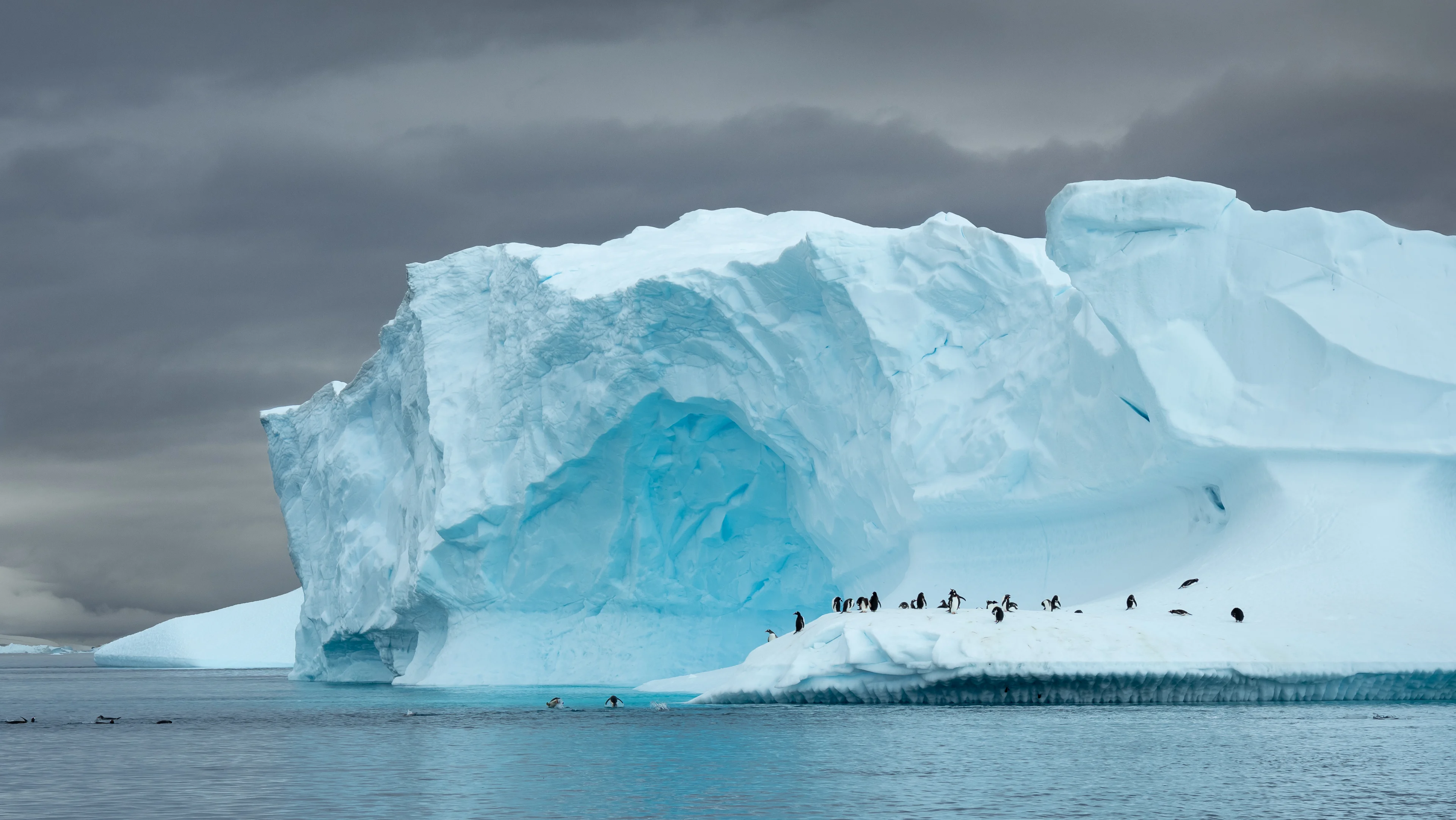
Sign up for our newsletter
Be the first to hear about our latest offers, exciting itineraries and inspirational articles.

- Hebrides Wildlife Cruises
- Private Cruise Charter Prices
- The Malt Whisky Island Cruise
- Private Cruise Charter Reviews
- Calendar 2024
- Calendar 2025
- Calendar 2026
- Wildlife on our cruises
- Elizabeth G Deck Plans
- Elizabeth G Gallery
- Emma Jane Deck Plans
- Emma Jane Gallery
- Lucy Mary Deck Plans
- Lucy Mary Gallery
- Our Crews for the 2024 Season
- Explore onshore
- Our Local Food Suppliers
- Environmental policy
- Charter for responsible and sustainable tourism
- Safety and comfort for all abilities
- Isle of Skye
- The Small Isles
- The Monach Islands
- The Shiant Islands
- The Island of mull
- Reviews from Travel Writers
- Add Cruise Review
- Video Gallery
- Highlights from our 2023 cruising season
- Highlights from our 2022 cruising season
- Highlights from our 2021 cruising season
- Wildlife images from our 2019 cruises
- Wildlife images from our 2018 cruises
- Wildlife images from our 2017 cruises
- Wildlife and nature species seen on our cruises
- Fabulous food gallery
- Images from our guest David Hiley, St Kilda 2019
- Bird images St Kilda and the Hebrides Cruise: Mick Temple
- Images from our guest David Hiley of his Hebrides cruise
- Accommodation Partners
- Frequently Asked Questions
- Cruising Tips
- Privacy Policy
- Terms and Conditions

The St Kilda Archipelago of Islands and Stacs is located 42 miles west of Benbecula in the Outer Hebrides. St Kilda is managed by the National Trust for Scotland in partnership with Scottish Natural Heritage and the MoD. St Kilda has the highest sea cliffs in the UK; the cliffs at Conachair are 1400 feet high. Our St Kilda anchorage is in the spectacular Village Bay in main Island of Hirta which is the only island where a boat can land and put people ashore. Hirta offers great walking opportunities with a walk to the Mistress Stone and the Lovers Stone being very popular.
Amazing wildlife
St Kilda is home to the biggest colony of gannets in the world and also large numbers of puffins. Thousands of puffin burrows pepper the steep grassy slopes of Dun. Other nesting birds include guillemot, razorbill, great skua, Manx shearwater,storm petrel, Leach’s petrel and shag. Our unique knowledge of St.Kilda enables us to give our guests a spectacular ‘close up’ voyage around the fascinating islands and stacs that make up St.Kilda. We are able to cruise directly under the “Casting Off Stone” on Stac Lee with its many thousands of nesting gannets, giving an incredible view of probably the most spectacular of all the Stacs of St.Kilda. Many other species of birds can be found breeding here or passing through. The St Kilda wren and St Kilda mouse are both unique to the islands.
The only seal to frequent the shores of St Kilda is the Atlantic grey seal. The St Kildan’s hunted the seals and after they abandoned Hirta, seals moved in to breed. The main concentrations are in Glen Bay, Soay Sound and on both sides of the neck of the Cambir. Their calls echo round the Tunnel at Gob na h-Airde and, appropriately enough, at Geo nan Ron – the cleft of the seals.
Sightings of cetaceans are mainly made in the summer months from May to August. Minke whale is the most commonly recorded species, with orcas as the next most commonly seen species. Occasional groups may remain around the islands for several days or even weeks. Groups of up to 15 Risso’s dolphins have been seen, as well as white-sided dolphins. Harbour porpoises and small numbers of white-beaked dolphins are sometime spotted with bottlenose and common dolphins and large whales occasionally recorded.
Fascinating ancient heritage
St Kilda also has a fascinating ancient heritage and the remains of a dun (fort) on Island of Dun can still be seen. There have been people on St Kilda since prehistoric times, exploiting the rich resources of the sea, growing crops and keeping animals. It is not clear when the first settlers came to St Kilda, but simple stone tools found on Hirta suggest that Bronze Age travellers may have visited St Kilda from the Western Isles some 4,000 to 5,000 years ago. In the 1830s the Rev Neil Mackenzie found what were probably remains of burial cists in Village Bay. Excavations in 1995 revealed a possible burial structure dating from the Bronze Age. In 1844 an earth house (souterrain), possibly a store associated with an Iron Age house dating from about 2,000 years ago, was discovered.
- Cruise Area
Overall the cruise was a great date for me. It was very easy to book and I rate Emma the best contact person ever. I appreciated not having to go thru an agent who would take a very large deposit. Emma also made joining the cruise very easy especially as I had to arrive late and in the rain...her picking me up was very gracious and hospitable. Disembarking was a breeze..

Our Partners

Designed by Clearbox Designs
+44 (0) 7786 932 082 [email protected] Book Your Cruise
- Scottish Cruises
- Islands and Wildlife of the Southern Hebrides
- Kyles and the Isles
- Villages and Gardens of South Argyll
- Magic of Mull Short Break Cruise
- Arran and Ailsa Craig Wildlife Explorer
- Inlets and Islands of Wild Argyll
- Skye and the Small Isles Cruise
- Magnificent Island of Mull Cruise
- Southern Hebrides and Mull of Kintyre Cruise
- Corryvreckan to the Shiants
- Hebridean Odyssey Cruise
- Scottish Cruises 2024
- Scottish Cruises 2025
- Special Offers
- Private Cruise Charter
- Family Cruise Holiday
- Cruising Area
- Wildlife Cruises
- Life On Board
- Example Menu
- Getting To Us
- Guest Experience
- Guest Comments
- A Foodie’s Guide to Oban
- Ahoy from Oban
- All About Ailsa Craig
- Green Tourism and Our Green Journey
- Oban – Summer 2024
- Our Local Suppliers
- Events in Argyll and Bute this summer
- Ten Things You Can Do to have a More Sustainable Holiday
- Scottish Island Hopping with Argyll Cruising
- Why You Should Cruise the Firth of Clyde
- 2025 Scottish Cruises
- That’s a wrap on the 2023 cruising season
- What is the Corryvreckan Whirlpool?
- Your Scottish Cruise Reading List
- Whale Watching in Scotland: Ted’s Top Tips
- Differences Between Dolphins and Porpoises: Ted’s Top Tips
- Puffins in Scotland: Ted’s Top Tips
- The 2023 Cruising Season is Here!
- Argyll Cruising and Scotland’s Greatest Escape
- How to Spot a White-Tailed Sea Eagle: Ted’s Top Tips
- Argyll Cruising Update | Spring 2022
- Another Fantastic Year of Scottish Cruising and Looking Forward to 2023 and 2024
- Whales Galore in 2022
- The 2023 Hebridean Odyssey and Scottish Private Charter Cruises
- Ahoy from Skipper and Owner Ted
- Coronavirus Update | 02 April 2021
Explore Scotland by small boat Splendour. Travel among spectacular scenery, wildlife, heritage and feast on local produce from Argyll and Arran.
Splendour looked splendid, befitting - the ensuite cabins are spacious and luxuriously furnished. Gourmet meals using fresh local produce.
Cruising Scotland's Hebrides was an adventure - and one full of new friends and incredible wildlife and nature.
Unwind on the West Coast of Scotland on a Unique Small Boat Cruising Holiday
- View Current Availability >
- Create Your Own Itinerary >
- Book Your Holiday for 2024 or 2025 >
Explore the Picturesque West Coast of Scotland and the Hebrides on our Unique Scottish Cruises
Argyll Cruising offers ten unique Scottish Cruises, visiting the inlets and islands of Argyll, Arran and the Hebrides, including Mull, Islay, Jura and Skye and the Small Isles. The spectacular cruises run from three to thirteen nights, amongst the beautiful islands and stunning sea lochs of Argyll. With a maximum of 8 guests on board, these are highly personalised cruising experiences within an idyllic maritime setting.
Your skipper will welcome you on board the elegant Splendour , a tastefully converted traditional wooden trawler yacht, and home for the duration of your cruise. A holiday on board Splendour offers the perfect escape with relaxing and welcoming accommodation. On the spacious outdoor decks you have the choice of unwinding on sun loungers, wildlife watching, perhaps a spot of fishing, or an invigorating plunge into a secluded bay.
Watch The Argyll Cruising Experience
Explore the Coastline of Argyll, Arran and the Outer Hebrides
Going ashore by tender is part of the fun. Opportunities to explore stunning coastlines, traditional villages, ancient woodlands, castles and world famous whisky distilleries are plentiful on our Scottish cruises. While out on the tender you might have the opportunity to help crew set creels for crab or lobster, which could even be served at the next meal. The ultimate in food from source to table.
View Our Cruises >

Excellent Hospitality Onboard
After time on deck, exploring on shore and creating lasting memories, relax in the deck saloon and get to know your fellow guests whilst enjoying the freshest local produce, prepared and cooked by our private chef.
View Accommodation >
An Abundance of Wildlife to See
Join us on a Scottish wildlife cruise where we sail under the towering cliffs of Ailsa Craig, the seabird mecca of the Western Isles. With over 40,000 breeding gannets, hundreds of puffins, porpoises and the chance to spot minke whales, all from the spacious wildlife watching decks of Splendour, our cruises are a nature lover’s dream.
View Gallery >

Cruise Scotland in Style
With beautiful traditional lines, Splendour lives up to her name, both outside and in. Boasting double or twin private en suite cabins, she is more than suitable for the modern traveller, and offers a comfortable and cosy cruising experience.
Life On Board >
“Words fail. Our hearts are full and our souls are refreshed. The trip was amazing.” Bud and Gayle Harris
Private charter | May 2023
“Thank you for a brilliant holiday. I loved every bit about it. Food was fantastic. I’ll be back.” Brigitte Jones
Kyles and the Isles | April 2023
“A wonderful week cruising around the Clyde, Arran and Ailsa Craig. Superb company and excellent food. Thank you Ted and Iggy.” John
Arran and Ailsa Craig Wildlife Explorer | May 2022
“One of my very favourite adventures.” Ron Domin
“A gem of a holiday. We think we’ll definitely be back in the future to enjoy another trip with Ted and his top team.”
Skye and the Small Isles | July 2023
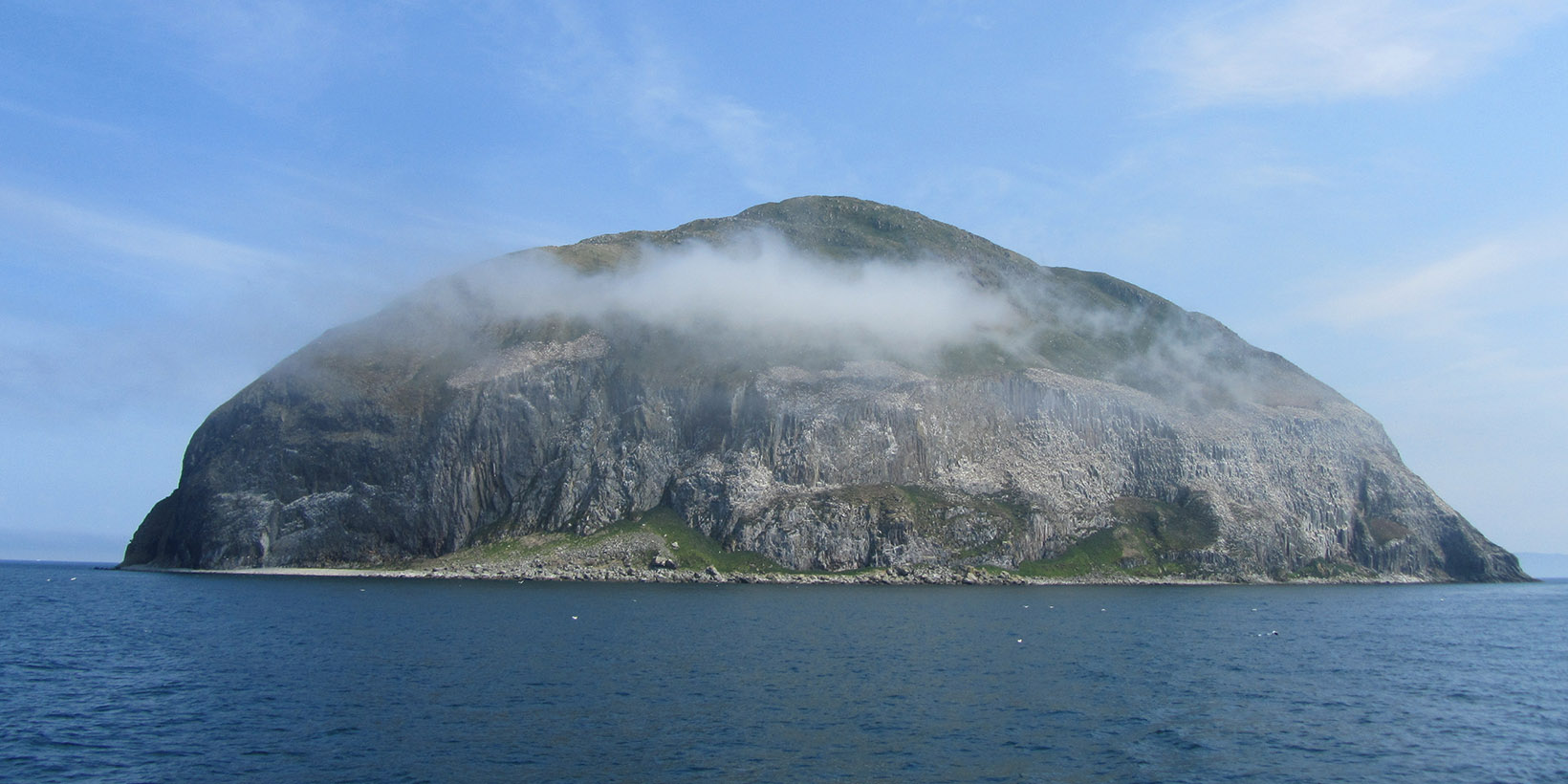
Explore Our Scottish Cruises
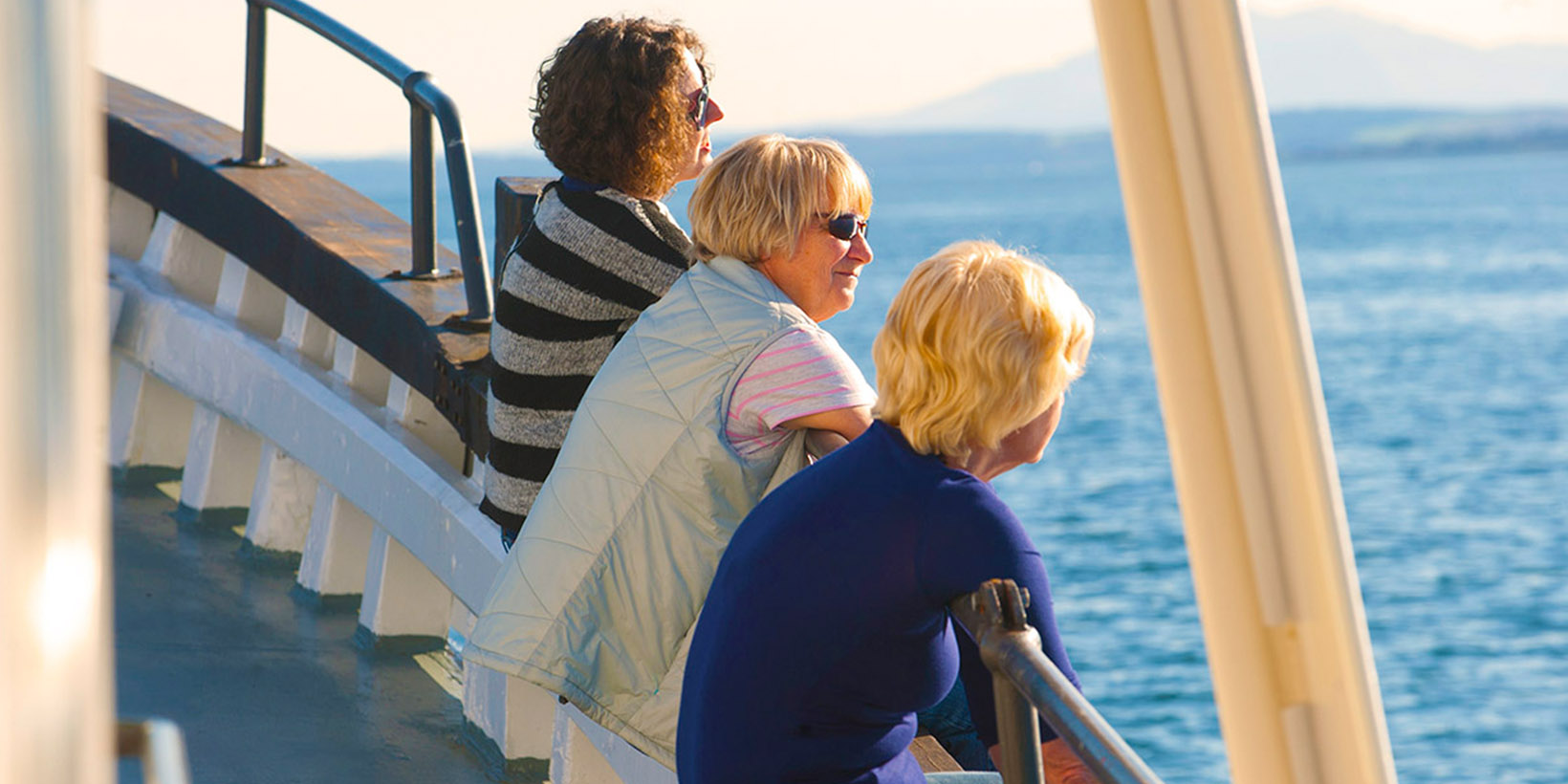
Private Charter Cruises
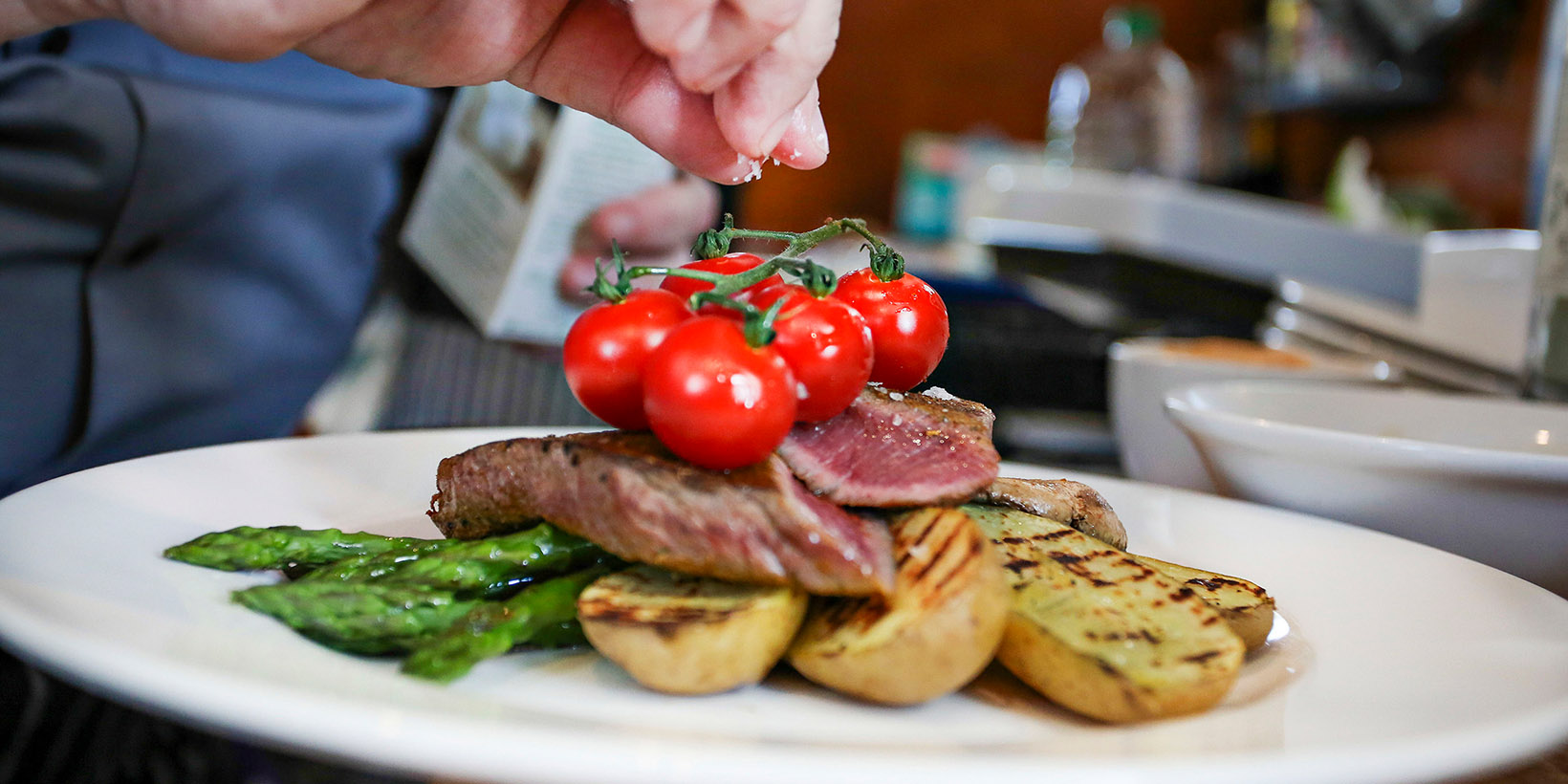
Life on board Splendour
Subscribe to our cruise news.
- Email This field is for validation purposes and should be left unchanged.
- Places - European, Western and Northern Russia
YEKATERINBURG: FACTORIES, URAL SIGHTS, YELTSIN AND THE WHERE NICHOLAS II WAS KILLED
Sverdlovsk oblast.
Sverdlovsk Oblast is the largest region in the Urals; it lies in the foothills of mountains and contains a monument indicating the border between Europe and Asia. The region covers 194,800 square kilometers (75,200 square miles), is home to about 4.3 million people and has a population density of 22 people per square kilometer. About 83 percent of the population live in urban areas. Yekaterinburg is the capital and largest city, with 1.5 million people. For Russians, the Ural Mountains are closely associated with Pavel Bazhov's tales and known for folk crafts such as Kasli iron sculpture, Tagil painting, and copper embossing. Yekaterinburg is the birthplace of Russia’s iron and steel industry, taking advantage of the large iron deposits in the Ural mountains. The popular Silver Ring of the Urals tourist route starts here.
In the summer you can follow in the tracks of Yermak, climb relatively low Ural mountain peaks and look for boulders seemingly with human faces on them. You can head to the Gemstone Belt of the Ural mountains, which used to house emerald, amethyst and topaz mines. In the winter you can go ice fishing, ski and cross-country ski.
Sverdlovsk Oblast and Yekaterinburg are located near the center of Russia, at the crossroads between Europe and Asia and also the southern and northern parts of Russia. Winters are longer and colder than in western section of European Russia. Snowfalls can be heavy. Winter temperatures occasionally drop as low as - 40 degrees C (-40 degrees F) and the first snow usually falls in October. A heavy winter coat, long underwear and good boots are essential. Snow and ice make the sidewalks very slippery, so footwear with a good grip is important. Since the climate is very dry during the winter months, skin moisturizer plus lip balm are recommended. Be alert for mud on street surfaces when snow cover is melting (April-May). Patches of mud create slippery road conditions.
Yekaterinburg
Yekaterinburg (kilometer 1818 on the Trans-Siberian Railway) is the fourth largest city in Russia, with of 1.5 million and growth rate of about 12 percent, high for Russia. Located in the southern Ural mountains, it was founded by Peter the Great and named after his wife Catherine, it was used by the tsars as a summer retreat and is where tsar Nicholas II and his family were executed and President Boris Yeltsin lived most of his life and began his political career. The city is near the border between Europe and Asia.
Yekaterinburg (also spelled Ekaterinburg) is located on the eastern slope of the Ural Mountains in the headwaters of the Iset and Pyshma Rivers. The Iset runs through the city center. Three ponds — Verkh-Isetsky, Gorodskoy and Nizhne-Isetsky — were created on it. Yekaterinburg has traditionally been a city of mining and was once the center of the mining industry of the Urals and Siberia. Yekaterinburg remains a major center of the Russian armaments industry and is sometimes called the "Pittsburgh of Russia.". A few ornate, pastel mansions and wide boulevards are reminders of the tsarist era. The city is large enough that it has its own Metro system but is characterized mostly by blocky Soviet-era apartment buildings. The city has advanced under President Vladimir Putin and is now one of the fastest growing places in Russia, a country otherwise characterized by population declines
Yekaterinburg is technically an Asian city as it lies 32 kilometers east of the continental divide between Europe and Asia. The unofficial capital of the Urals, a key region in the Russian heartland, it is second only to Moscow in terms of industrial production and capital of Sverdlovsk oblast. Among the important industries are ferrous and non-ferrous metallurgy, machine building and metalworking, chemical and petrochemicals, construction materials and medical, light and food industries. On top of being home of numerous heavy industries and mining concerns, Yekaterinburg is also a major center for industrial research and development and power engineering as well as home to numerous institutes of higher education, technical training, and scientific research. In addition, Yekaterinburg is the largest railway junction in Russia: the Trans-Siberian Railway passes through it, the southern, northern, western and eastern routes merge in the city.
Accommodation: There are two good and affordable hotels — the 3-star Emerald and Parus hotels — located close to the city's most popular landmarks and main transport interchanges in the center of Yekaterinburg. Room prices start at RUB 1,800 per night.
History of Yekaterinburg
Yekaterinburg was founded in 1723 by Peter the Great and named after his wife Catherine I. It was used by the tsars as a summer retreat but was mainly developed as metalworking and manufacturing center to take advantage of the large deposits of iron and other minerals in the Ural mountains. It is best known to Americans as the place where the last Tsar and his family were murdered by the Bolsheviks in 1918 and near where American U-2 spy plane, piloted by Gary Powers, was shot down in 1960.
Peter the Great recognized the importance of the iron and copper-rich Urals region for Imperial Russia's industrial and military development. In November 1723, he ordered the construction of a fortress factory and an ironworks in the Iset River Valley, which required a dam for its operation. In its early years Yekaterinburg grew rich from gold and other minerals and later coal. The Yekaterinburg gold rush of 1745 created such a huge amount of wealth that one rich baron of that time hosted a wedding party that lasted a year. By the mid-18th century, metallurgical plants had sprung up across the Urals to cast cannons, swords, guns and other weapons to arm Russia’s expansionist ambitions. The Yekaterinburg mint produced most of Russia's coins. Explorations of the Trans-Baikal and Altai regions began here in the 18th century.
Iron, cast iron and copper were the main products. Even though Iron from the region went into the Eiffel Tower, the main plant in Yekaterinburg itself was shut down in 1808. The city still kept going through a mountain factory control system of the Urals. The first railway in the Urals was built here: in 1878, the Yekaterinburg-Perm railway branch connected the province's capital with the factories of the Middle Urals.
In the Soviet era the city was called Sverdlovsk (named after Yakov Sverdlov, the man who organized Nicholas II's execution). During the first five-year plans the city became industrial — old plants were reconstructed, new ones were built. The center of Yekaterinburg was formed to conform to the historical general plan of 1829 but was the layout was adjusted around plants and factories. In the Stalin era the city was a major gulag transhipment center. In World War II, many defense-related industries were moved here. It and the surrounding area were a center of the Soviet Union's military industrial complex. Soviet tanks, missiles and aircraft engines were made in the Urals. During the Cold War era, Yekaterinburg was a center of weapons-grade uranium enrichment and processing, warhead assembly and dismantlement. In 1979, 64 people died when anthrax leaked from a biological weapons facility. Yekaterinburg was a “Closed City” for 40 years during the Cold Soviet era and was not open to foreigners until 1991
In the early post-Soviet era, much like Pittsburgh in the 1970s, Yekaterinburg had a hard struggle d to cope with dramatic economic changes that have made its heavy industries uncompetitive on the world market. Huge defense plants struggled to survive and the city was notorious as an organized crime center in the 1990s, when its hometown boy Boris Yeltsin was President of Russia. By the 2000s, Yekaterinburg’s retail and service was taking off, the defense industry was reviving and it was attracting tech industries and investments related to the Urals’ natural resources. By the 2010s it was vying to host a world exhibition in 2020 (it lost, Dubai won) and it had McDonald’s, Subway, sushi restaurants, and Gucci, Chanel and Armani. There were Bentley and Ferrari dealerships but they closed down
Transportation in Yekaterinburg
Getting There: By Plane: Yekaterinburg is a three-hour flight from Moscow with prices starting at RUB 8,000, or a 3-hour flight from Saint Petersburg starting from RUB 9,422 (direct round-trip flight tickets for one adult passenger). There are also flights from Frankfurt, Istanbul, China and major cities in the former Soviet Union.
By Train: Yekaterinburg is a major stop on the Trans-Siberian Railway. Daily train service is available to Moscow and many other Russian cities.Yekaterinburg is a 32-hour train ride from Moscow (tickets RUB 8,380 and above) or a 36-hour train ride from Saint Petersburg (RUB 10,300 and above). The ticket prices are round trip for a berth in a sleeper compartment for one adult passenger). By Car: a car trip from Moscow to Yekateringburg is 1,787 kilometers long and takes about 18 hours. The road from Saint Petersburg is 2,294 kilometers and takes about 28 hours.
Regional Transport: The region's public transport includes buses and suburban electric trains. Regional trains provide transport to larger cities in the Ural region. Buses depart from Yekaterinburg’s two bus stations: the Southern Bus Station and the Northern Bus Station.
Regional Transport: According the to Association for Safe International Road Travel (ASIRT): “Public transportation is well developed. Overcrowding is common. Fares are low. Service is efficient. Buses are the main form of public transport. Tram network is extensive. Fares are reasonable; service is regular. Trams are heavily used by residents, overcrowding is common. Purchase ticket after boarding. Metro runs from city center to Uralmash, an industrial area south of the city. Metro ends near the main railway station. Fares are inexpensive.
“Traffic is congested in city center. Getting around by car can be difficult. Route taxis (minivans) provide the fastest transport. They generally run on specific routes, but do not have specific stops. Drivers stop where passengers request. Route taxis can be hailed. Travel by bus or trolleybuses may be slow in rush hour. Trams are less affected by traffic jams. Trolley buses (electric buses) cannot run when temperatures drop below freezing.”
Entertainment, Sports and Recreation in Yekaterinburg
The performing arts in Yekaterinburg are first rate. The city has an excellent symphony orchestra, opera and ballet theater, and many other performing arts venues. Tickets are inexpensive. The Yekaterinburg Opera and Ballet Theater is lavishly designed and richly decorated building in the city center of Yekaterinburg. The theater was established in 1912 and building was designed by architect Vladimir Semyonov and inspired by the Vienna Opera House and the Theater of Opera and Ballet in Odessa.
Vaynera Street is a pedestrian only shopping street in city center with restaurants, cafes and some bars. But otherwise Yekaterinburg's nightlife options are limited. There are a handful of expensive Western-style restaurants and bars, none of them that great. Nightclubs serve the city's nouveau riche clientele. Its casinos have closed down. Some of them had links with organized crime. New dance clubs have sprung up that are popular with Yekaterinburg's more affluent youth.
Yekaterinburg's most popular spectator sports are hockey, basketball, and soccer. There are stadiums and arenas that host all three that have fairly cheap tickets. There is an indoor water park and lots of parks and green spaces. The Urals have many lakes, forests and mountains are great for hiking, boating, berry and mushroom hunting, swimming and fishing. Winter sports include cross-country skiing and ice skating. Winter lasts about six months and there’s usually plenty of snow. The nearby Ural Mountains however are not very high and the downhill skiing opportunities are limited..
Sights in Yekaterinburg
Sights in Yekaterinburg include the Museum of City Architecture and Ural Industry, with an old water tower and mineral collection with emeralds. malachite, tourmaline, jasper and other precious stone; Geological Alley, a small park with labeled samples of minerals found in the Urals region; the Ural Geology Museum, which houses an extensive collection of stones, gold and gems from the Urals; a monument marking the border between Europe and Asia; a memorial for gulag victims; and a graveyard with outlandish memorials for slain mafia members.
The Military History Museum houses the remains of the U-2 spy plane shot down in 1960 and locally made tanks and rocket launchers. The fine arts museum contains paintings by some of Russia's 19th-century masters. Also worth a look are the History an Local Studies Museum; the Political History and Youth Museum; and the University and Arboretum. Old wooden houses can be seen around Zatoutstovsya ulitsa and ulitsa Belinskogo. Around the city are wooded parks, lakes and quarries used to harvest a variety of minerals. Weiner Street is the main street of Yekaterinburg. Along it are lovely sculptures and 19th century architecture. Take a walk around the unique Literary Quarter
Plotinka is a local meeting spot, where you will often find street musicians performing. Plotinka can be described as the center of the city's center. This is where Yekaterinburg holds its biggest events: festivals, seasonal fairs, regional holiday celebrations, carnivals and musical fountain shows. There are many museums and open-air exhibitions on Plotinka. Plotinka is named after an actual dam of the city pond located nearby (“plotinka” means “a small dam” in Russian).In November 1723, Peter the Great ordered the construction of an ironworks in the Iset River Valley, which required a dam for its operation. “Iset” can be translated from Finnish as “abundant with fish”. This name was given to the river by the Mansi — the Finno-Ugric people dwelling on the eastern slope of the Northern Urals.
Vysotsky and Iset are skyscrapers that are 188.3 meters and 209 meters high, respectively. Fifty-story-high Iset has been described by locals as the world’s northernmost skyscraper. Before the construction of Iset, Vysotsky was the tallest building of Yekaterinburg and Russia (excluding Moscow). A popular vote has decided to name the skyscraper after the famous Soviet songwriter, singer and actor Vladimir Vysotsky. and the building was opened on November 25, 2011. There is a lookout at the top of the building, and the Vysotsky museum on its second floor. The annual “Vysotsky climb” (1137 steps) is held there, with a prize of RUB 100,000. While Vysotsky serves as an office building, Iset, owned by the Ural Mining and Metallurgical Company, houses 225 premium residential apartments ranging from 80 to 490 square meters in size.
Boris Yeltsin Presidential Center
The Boris Yeltsin Presidential Center (in the city center: ul. Yeltsina, 3) is a non-governmental organization named after the first president of the Russian Federation. The Museum of the First President of Russia as well as his archives are located in the Center. There is also a library, educational and children's centers, and exposition halls. Yeltsin lived most of his life and began his political career in Yekaterinburg. He was born in Butka about 200 kilometers east of Yekaterinburg.
The core of the Center is the Museum. Modern multimedia technologies help animate the documents, photos from the archives, and artifacts. The Yeltsin Museum holds collections of: propaganda posters, leaflets, and photos of the first years of the Soviet regime; portraits and portrait sculptures of members of Politburo of the Central Committee of the Communist Party of various years; U.S.S.R. government bonds and other items of the Soviet era; a copy of “One Day in the Life of Ivan Denisovich” by Alexander Solzhenitsyn, published in the “Novy Mir” magazine (#11, 1962); perestroika-era editions of books by Alexander Solzhenitsyn, Vasily Grossman, and other authors; theater, concert, and cinema posters, programs, and tickets — in short, all of the artifacts of the perestroika era.
The Yeltsin Center opened in 2012. Inside you will also find an art gallery, a bookstore, a gift shop, a food court, concert stages and a theater. There are regular screenings of unique films that you will not find anywhere else. Also operating inside the center, is a scientific exploritorium for children. The center was designed by Boris Bernaskoni. Almost from the its very opening, the Yeltsin Center has been accused by members of different political entities of various ideological crimes. The museum is open Tuesday to Sunday, from 10:00am to 9:00pm.
Where Nicholas II was Executed
On July, 17, 1918, during this reign of terror of the Russian Civil War, former-tsar Nicholas II, his wife, five children (the 13-year-old Alexis, 22-year-old Olga, 19-year-old Maria and 17-year-old Anastasia)the family physician, the cook, maid, and valet were shot to death by a Red Army firing squad in the cellar of the house they were staying at in Yekaterinburg.
Ipatiev House (near Church on the Blood, Ulitsa Libknekhta) was a merchant's house where Nicholas II and his family were executed. The house was demolished in 1977, on the orders of an up and coming communist politician named Boris Yeltsin. Yeltsin later said that the destruction of the house was an "act of barbarism" and he had no choice because he had been ordered to do it by the Politburo,
The site is marked with s cross with the photos of the family members and cross bearing their names. A small wooden church was built at the site. It contains paintings of the family. For a while there were seven traditional wooden churches. Mass is given ay noon everyday in an open-air museum. The Church on the Blood — constructed to honor Nicholas II and his family — was built on the part of the site in 1991 and is now a major place of pilgrimage.
Nicholas and his family where killed during the Russian civil war. It is thought the Bolsheviks figured that Nicholas and his family gave the Whites figureheads to rally around and they were better of dead. Even though the death orders were signed Yakov Sverdlov, the assassination was personally ordered by Lenin, who wanted to get them out of sight and out of mind. Trotsky suggested a trial. Lenin nixed the idea, deciding something had to be done about the Romanovs before White troops approached Yekaterinburg. Trotsky later wrote: "The decision was not only expedient but necessary. The severity of he punishment showed everyone that we would continue to fight on mercilessly, stopping at nothing."
Ian Frazier wrote in The New Yorker: “Having read a lot about the end of Tsar Nicholas II and his family and servants, I wanted to see the place in Yekaterinburg where that event occurred. The gloomy quality of this quest depressed Sergei’s spirits, but he drove all over Yekaterinburg searching for the site nonetheless. Whenever he stopped and asked a pedestrian how to get to the house where Nicholas II was murdered, the reaction was a wince. Several people simply walked away. But eventually, after a lot of asking, Sergei found the location. It was on a low ridge near the edge of town, above railroad tracks and the Iset River. The house, known as the Ipatiev House, was no longer standing, and the basement where the actual killings happened had been filled in. I found the blankness of the place sinister and dizzying. It reminded me of an erasure done so determinedly that it had worn a hole through the page. [Source: Ian Frazier, The New Yorker, August 3, 2009, Frazier is author of “Travels in Siberia” (2010)]
“The street next to the site is called Karl Liebknecht Street. A building near where the house used to be had a large green advertisement that said, in English, “LG—Digitally Yours.” On an adjoining lot, a small chapel kept the memory of the Tsar and his family; beneath a pedestal holding an Orthodox cross, peonies and pansies grew. The inscription on the pedestal read, “We go down on our knees, Russia, at the foot of the tsarist cross.”
Books: The Romanovs: The Final Chapter by Robert K. Massie (Random House, 1995); The Fall of the Romanovs by Mark D. Steinberg and Vladimir Khrustalëv (Yale, 1995);
See Separate Article END OF NICHOLAS II factsanddetails.com
Execution of Nicholas II
According to Robert Massie K. Massie, author of Nicholas and Alexandra, Nicholas II and his family were awakened from their bedrooms around midnight and taken to the basement. They were told they were to going to take some photographs of them and were told to stand behind a row of chairs.
Suddenly, a group of 11 Russians and Latvians, each with a revolver, burst into the room with orders to kill a specific person. Yakob Yurovsky, a member of the Soviet executive committee, reportedly shouted "your relatives are continuing to attack the Soviet Union.” After firing, bullets bouncing off gemstones hidden in the corsets of Alexandra and her daughters ricocheted around the room like "a shower of hail," the soldiers said. Those that were still breathing were killed with point black shots to the head.
The three sisters and the maid survived the first round thanks to their gems. They were pressed up against a wall and killed with a second round of bullets. The maid was the only one that survived. She was pursued by the executioners who stabbed her more than 30 times with their bayonets. The still writhing body of Alexis was made still by a kick to the head and two bullets in the ear delivered by Yurovsky himself.
Yurovsky wrote: "When the party entered I told the Romanovs that in view of the fact their relatives continued their offensive against Soviet Russia, the Executive Committee of the Urals Soviet had decided to shoot them. Nicholas turned his back to the detachment and faced his family. Then, as if collecting himself, he turned around, asking, 'What? What?'"
"[I] ordered the detachment to prepare. Its members had been previously instructed whom to shoot and to am directly at the heart to avoid much blood and to end more quickly. Nicholas said no more. he turned again to his family. The others shouted some incoherent exclamations. All this lasted a few seconds. Then commenced the shooting, which went on for two or three minutes. [I] killed Nicholas on the spot."
Nicholas II’s Initial Burial Site in Yekaterinburg
Ganina Yama Monastery (near the village of Koptyaki, 15 kilometers northwest of Yekaterinburg) stands near the three-meter-deep pit where some the remains of Nicholas II and his family were initially buried. The second burial site — where most of the remains were — is in a field known as Porosyonkov (56.9113628°N 60.4954326°E), seven kilometers from Ganina Yama.
On visiting Ganina Yama Monastery, one person posted in Trip Advisor: “We visited this set of churches in a pretty park with Konstantin from Ekaterinburg Guide Centre. He really brought it to life with his extensive knowledge of the history of the events surrounding their terrible end. The story is so moving so unless you speak Russian, it is best to come here with a guide or else you will have no idea of what is what.”
In 1991, the acid-burned remains of Nicholas II and his family were exhumed from a shallow roadside mass grave in a swampy area 12 miles northwest of Yekaterinburg. The remains had been found in 1979 by geologist and amateur archeologist Alexander Avdonin, who kept the location secret out of fear that they would be destroyed by Soviet authorities. The location was disclosed to a magazine by one his fellow discovers.
The original plan was to throw the Romanovs down a mine shaft and disposes of their remains with acid. They were thrown in a mine with some grenades but the mine didn't collapse. They were then carried by horse cart. The vats of acid fell off and broke. When the carriage carrying the bodies broke down it was decided the bury the bodies then and there. The remaining acid was poured on the bones, but most of it was soaked up the ground and the bones largely survived.
After this their pulses were then checked, their faces were crushed to make them unrecognizable and the bodies were wrapped in bed sheets loaded onto a truck. The "whole procedure," Yurovsky said took 20 minutes. One soldiers later bragged than he could "die in peace because he had squeezed the Empress's -------."
The bodies were taken to a forest and stripped, burned with acid and gasoline, and thrown into abandoned mine shafts and buried under railroad ties near a country road near the village of Koptyaki. "The bodies were put in the hole," Yurovsky wrote, "and the faces and all the bodies, generally doused with sulfuric acid, both so they couldn't be recognized and prevent a stink from them rotting...We scattered it with branches and lime, put boards on top and drove over it several times—no traces of the hole remained.
Shortly afterwards, the government in Moscow announced that Nicholas II had been shot because of "a counterrevolutionary conspiracy." There was no immediate word on the other members of the family which gave rise to rumors that other members of the family had escaped. Yekaterinburg was renamed Sverdlov in honor of the man who signed the death orders.
For seven years the remains of Nicholas II, Alexandra, three of their daughters and four servants were stored in polyethylene bags on shelves in the old criminal morgue in Yekaterunburg. On July 17, 1998, Nicholas II and his family and servants who were murdered with him were buried Peter and Paul Fortress in St. Petersburg along with the other Romanov tsars, who have been buried there starting with Peter the Great. Nicholas II had a side chapel built for himself at the fortress in 1913 but was buried in a new crypt.
Near Yekaterinburg
Factory-Museum of Iron and Steel Metallurgy (in Niznhy Tagil 80 kilometers north of Yekaterinburg) a museum with old mining equipment made at the site of huge abandoned iron and steel factory. Officially known as the Factory-Museum of the History of the Development of Iron and Steel Metallurgy, it covers an area of 30 hectares and contains a factory founded by the Demidov family in 1725 that specialized mainly in the production of high-quality cast iron and steel. Later, the foundry was renamed after Valerian Kuybyshev, a prominent figure of the Communist Party.
The first Russian factory museum, the unusual museum demonstrates all stages of metallurgy and metal working. There is even a blast furnace and an open-hearth furnace. The display of factory equipment includes bridge crane from 1892) and rolling stock equipment from the 19th-20th centuries. In Niznhy Tagil contains some huge blocks of malachite and
Nizhnyaya Sinyachikha (180 kilometers east-northeast of Yekaterinburg) has an open air architecture museum with log buildings, a stone church and other pre-revolutionary architecture. The village is the creation of Ivan Samoilov, a local activist who loved his village so much he dedicated 40 years of his life to recreating it as the open-air museum of wooden architecture.
The stone Savior Church, a good example of Siberian baroque architecture. The interior and exterior of the church are exhibition spaces of design. The houses are very colorful. In tsarist times, rich villagers hired serfs to paint the walls of their wooden izbas (houses) bright colors. Old neglected buildings from the 17th to 19th centuries have been brought to Nizhnyaya Sinyachikha from all over the Urals. You will see the interior design of the houses and hear stories about traditions and customs of the Ural farmers.
Verkhoturye (330 kilometers road from Yekaterinburg) is the home a 400-year-old monastery that served as 16th century capital of the Urals. Verkhoturye is a small town on the Tura River knows as the Jerusalem of the Urals for its many holy places, churches and monasteries. The town's main landmark is its Kremlin — the smallest in Russia. Pilgrims visit the St. Nicholas Monastery to see the remains of St. Simeon of Verkhoturye, the patron saint of fishermen.
Ural Mountains
Ural Mountains are the traditional dividing line between Europe and Asia and have been a crossroads of Russian history. Stretching from Kazakhstan to the fringes of the Arctic Kara Sea, the Urals lie almost exactly along the 60 degree meridian of longitude and extend for about 2,000 kilometers (1,300 miles) from north to south and varies in width from about 50 kilometers (30 miles) in the north and 160 kilometers (100 miles) the south. At kilometers 1777 on the Trans-Siberian Railway there is white obelisk with "Europe" carved in Russian on one side and "Asia" carved on the other.
The eastern side of the Urals contains a lot of granite and igneous rock. The western side is primarily sandstone and limestones. A number of precious stones can be found in the southern part of the Urals, including emeralds. malachite, tourmaline, jasper and aquamarines. The highest peaks are in the north. Mount Narodnaya is the highest of all but is only 1884 meters (6,184 feet) high. The northern Urals are covered in thick forests and home to relatively few people.
Like the Appalachian Mountains in the eastern United States, the Urals are very old mountains — with rocks and sediments that are hundreds of millions years old — that were one much taller than they are now and have been steadily eroded down over millions of years by weather and other natural processes to their current size. According to Encyclopedia Britannica: “The rock composition helps shape the topography: the high ranges and low, broad-topped ridges consist of quartzites, schists, and gabbro, all weather-resistant. Buttes are frequent, and there are north–south troughs of limestone, nearly all containing river valleys. Karst topography is highly developed on the western slopes of the Urals, with many caves, basins, and underground streams. The eastern slopes, on the other hand, have fewer karst formations; instead, rocky outliers rise above the flattened surfaces. Broad foothills, reduced to peneplain, adjoin the Central and Southern Urals on the east.
“The Urals date from the structural upheavals of the Hercynian orogeny (about 250 million years ago). About 280 million years ago there arose a high mountainous region, which was eroded to a peneplain. Alpine folding resulted in new mountains, the most marked upheaval being that of the Nether-Polar Urals...The western slope of the Urals is composed of middle Paleozoic sedimentary rocks (sandstones and limestones) that are about 350 million years old. In many places it descends in terraces to the Cis-Ural depression (west of the Urals), to which much of the eroded matter was carried during the late Paleozoic (about 300 million years ago). Found there are widespread karst (a starkly eroded limestone region) and gypsum, with large caverns and subterranean streams. On the eastern slope, volcanic layers alternate with sedimentary strata, all dating from middle Paleozoic times.”
Southern Urals
The southern Urals are characterized by grassy slopes and fertile valleys. The middle Urals are a rolling platform that barely rises above 300 meters (1,000 feet). This region is rich in minerals and has been heavily industrialized. This is where you can find Yekaterinburg (formally Sverdlovsk), the largest city in the Urals.
Most of the Southern Urals are is covered with forests, with 50 percent of that pine-woods, 44 percent birch woods, and the rest are deciduous aspen and alder forests. In the north, typical taiga forests are the norm. There are patches of herbal-poaceous steppes, northem sphagnous marshes and bushy steppes, light birch forests and shady riparian forests, tall-grass mountainous meadows, lowland ling marshes and stony placers with lichen stains. In some places there are no large areas of homogeneous forests, rather they are forests with numerous glades and meadows of different size.
In the Ilmensky Mountains Reserve in the Southern Urals, scientists counted 927 vascular plants (50 relicts, 23 endemic species), about 140 moss species, 483 algae species and 566 mushroom species. Among the species included into the Red Book of Russia are feather grass, downy-leaved feather grass, Zalessky feather grass, moccasin flower, ladies'-slipper, neottianthe cucullata, Baltic orchis, fen orchis, helmeted orchis, dark-winged orchis, Gelma sandwart, Krasheninnikov sandwart, Clare astragalus.
The fauna of the vertebrate animals in the Reserve includes 19 fish, 5 amphibian and 5 reptile. Among the 48 mammal species are elks, roe deer, boars, foxes, wolves, lynxes, badgers, common weasels, least weasels, forest ferrets, Siberian striped weasel, common marten, American mink. Squirrels, beavers, muskrats, hares, dibblers, moles, hedgehogs, voles are quite common, as well as chiropterans: pond bat, water bat, Brandt's bat, whiskered bat, northern bat, long-eared bat, parti-coloured bat, Nathusius' pipistrelle. The 174 bird bird species include white-tailed eagles, honey hawks, boreal owls, gnome owls, hawk owls, tawny owls, common scoters, cuckoos, wookcocks, common grouses, wood grouses, hazel grouses, common partridges, shrikes, goldenmountain thrushes, black- throated loons and others.
Activities and Places in the Ural Mountains
The Urals possess beautiful natural scenery that can be accessed from Yekaterinburg with a rent-a-car, hired taxi and tour. Travel agencies arrange rafting, kayaking and hiking trips. Hikes are available in the taiga forest and the Urals. Trips often include walks through the taiga to small lakes and hikes into the mountains and excursions to collect mushrooms and berries and climb in underground caves. Mellow rafting is offered in a relatively calm six kilometer section of the River Serga. In the winter visitor can enjoy cross-mountains skiing, downhill skiing, ice fishing, dog sledding, snow-shoeing and winter hiking through the forest to a cave covered with ice crystals.
Lake Shartash (10 kilometers from Yekaterinburg) is where the first Ural gold was found, setting in motion the Yekaterinburg gold rush of 1745, which created so much wealth one rich baron of that time hosted a wedding party that lasted a year. The area around Shartash Lake is a favorite picnic and barbecue spot of the locals. Getting There: by bus route No. 50, 054 or 54, with a transfer to suburban commuter bus route No. 112, 120 or 121 (the whole trip takes about an hour), or by car (10 kilometers drive from the city center, 40 minutes).
Revun Rapids (90 kilometers road from Yekaterinburg near Beklenishcheva village) is a popular white water rafting places On the nearby cliffs you can see the remains of a mysterious petroglyph from the Paleolithic period. Along the steep banks, you may notice the dark entrance of Smolinskaya Cave. There are legends of a sorceress who lived in there. The rocks at the riverside are suited for competitive rock climbers and beginners. Climbing hooks and rings are hammered into rocks. The most fun rafting is generally in May and June.
Olenii Ruchii National Park (100 kilometers west of Yekaterinburg) is the most popular nature park in Sverdlovsk Oblast and popular weekend getaway for Yekaterinburg residents. Visitors are attracted by the beautiful forests, the crystal clear Serga River and picturesque rocks caves. There are some easy hiking routes: the six-kilometer Lesser Ring and the 15-kilometer Greater Ring. Another route extends for 18 km and passes by the Mitkinsky Mine, which operated in the 18th-19th centuries. It's a kind of an open-air museum — you can still view mining an enrichment equipment here. There is also a genuine beaver dam nearby.
Among the other attractions at Olenii Ruchii are Druzhba (Friendship) Cave, with passages that extend for about 500 meters; Dyrovaty Kamen (Holed Stone), created over time by water of Serga River eroding rock; and Utoplennik (Drowned Man), where you can see “The Angel of Sole Hope”., created by the Swedish artist Lehna Edwall, who has placed seven angels figures in different parts of the world to “embrace the planet, protecting it from fear, despair, and disasters.”
Image Sources: Wikimedia Commons
Text Sources: Federal Agency for Tourism of the Russian Federation (official Russia tourism website russiatourism.ru ), Russian government websites, UNESCO, Wikipedia, Lonely Planet guides, New York Times, Washington Post, Los Angeles Times, National Geographic, The New Yorker, Bloomberg, Reuters, Associated Press, AFP, Yomiuri Shimbun and various books and other publications.
Updated in September 2020
- Google+
Page Top
This site contains copyrighted material the use of which has not always been authorized by the copyright owner. Such material is made available in an effort to advance understanding of country or topic discussed in the article. This constitutes 'fair use' of any such copyrighted material as provided for in section 107 of the US Copyright Law. In accordance with Title 17 U.S.C. Section 107, the material on this site is distributed without profit. If you wish to use copyrighted material from this site for purposes of your own that go beyond 'fair use', you must obtain permission from the copyright owner. If you are the copyright owner and would like this content removed from factsanddetails.com, please contact me.

IMAGES
VIDEO
COMMENTS
A Majestic Line cruise: The Perfect Way to Explore the West Coast of Scotland and the Hebrides The Majestic Line has been hosting Scottish cruising holidays on the waters off the West Coast for 20 years. Most of our cruises depart from Oban, gateway to the Highlands and the Islands of the Outer and Inner Hebrides - sailing in these waters is the best way to explore the islands and the ...
Explore the beauty of the UK with Hebridean Island Cruises, one of the smallest and finest all-inclusive luxury cruise lines. Discover our unique voyages now. 01756 704704
Hebrides Cruises provides a sensational sea-going combination of luxury, adventure and breathtaking encounters with wildlife. Our classic, ocean-going vessels explore far-flung destinations such as St Kilda, Mingulay and the Shiants in comfort and safety, calling in at idyllic Outer Hebridean islands from Barra and the Uists to Lewis and Harris.
St Kilda Outer Hebrides cruise is the ultimate bucket-list 10-night trip to visit these amazing islands on the very edge of the Atlantic +44 (0)1631 711 986. ... The choice of Outer Hebrides island stopovers on this cruise is equally awe-inspiring and may include Mingulay, Vatersay, Barra, Eriskay, the Uists, the Shiants, Harris and others ...
26/08/2024. 7. NC500 via The Orkney Isles & St Kilda. Wick. Fort William. £1,750. ENQUIRE. Outer Hebrides Cruises Join us on one of our Scottish Outer Hebrides Cruises Join us on a 7 or 10 night cruise to the Outer Hebrides, Scotland's wild and beauti.
The Majestic Line have developed an enticing range of exclusive cruise itineraries covering 6 main cruising areas aboard our fleet of five ships. Let us take you to the most beautiful and secluded parts of the west coast of Scotland and the Hebrides. Choose from 3-night, 6-night and 10-night cruises. Many of our guests return year after year to ...
Our Partners. [email protected]. +44 (0)1631 711 986. +44 (0) 75851 51611. Hebrides Wildlife Cruises explore the Inner and Outer Hebrides, St Kilda, the remote North West of Scotland and the Caledonian Canal with guided onshore visits.
Outer Hebrides and St Kilda 10-nights. From £4,950.00 per person. Situated on the very edge of the Atlantic, the Outer Hebrides is an isolated chain of stunningly beautiful inter-connected islands with a unique way of life. Following a stopover in the Inner Hebrides, the cruise has a wide choice of far-flung idyllic destinations, from the ...
10 Night Cruise; Argyll & Hebrides; Edge of The World - St Kilda; Highlands; Scheduled Cruises for 2023; Magnificent, enthralling, bewitching and captivating - just some of the words that can be used to describe the breath-taking beauty that is St Kilda and its stunning archipelago. Detail of the abandoned village at St Kilda,
The Outer Hebrides, or the Western Isles, are an interconnected chain of Atlantic islands located around 40 miles off the northwest coast of Scotland. The archipelago stretches for around 130 miles from the Butt of Lewis in the north to Barra Head in the south with 12 inhabited islands and numerous uninhabited islands. You'll be immersed in ...
Memorable Scottish all inclusive wildlife watching cruises and scenic tours from Oban around the Inner and Outer Hebrides, the heart of whale, dolphin, puffin and eagle country. Small ship, slow travel cruising at its finest on the MV Hjalmar Bjørge carrying up to 12 guests around the Highlands and Islands including St Kilda. Private charter also available.
The Scottish Cruises. Spectacular Hebridean cruises aboard our small ships: St Hilda, Seahorse II or Gemini Explorer. Join us aboard our sea adventure vessels and cruise the world famous Sounds that separate the many isles of the Outer and Inner Hebrides and Argyll. We travel against a majestic backdrop of white-shell sand beaches, high ...
British Isles cruise - The Scottish Isles: Island Hopping in the Hebrides 2025/2026. Discover some of Scotland's most remote, romantic and rugged Hebridean islands on this island-hopping odyssey from Glasgow (Greenock). Visit picture-perfect villages and historic towns, and marvel at spectacular scenery and breathtaking beaches.
Words cannot describe the wonders you will enjoy - from the 900 foot high sea cliffs of Skye to the sand dunes of Mingulay, the close encounters of marine and land wildlife, visiting world famous whisky distilleries and through it all the blue of sky and sea. 13. Night Cruise. from £4,895 p/p. Ensuite Cabin. from £35,310.
Call 01756 704704 for more information or to book your luxury Scottish cruise. Lord of the Highlands. Purpose built to transit the historic locks of the Caledonian Canal following a multi-million pound rebuild, Lord of the Highlands is the latest addition to Hebridean Island Cruises' fleet of boutique cruise ships.
British Isles cruise - The Scottish Isles - Highlights of the Hebrides. Discover highlights of the Hebrides and Scottish Highlands, including Fort William in the shadow of Ben Nevis, on this expedition cruise from Glasgow (Greenock). Experience rugged landscapes, remote beaches and historic towns in the Inner and Outer Hebrides, and marvel ...
St Kilda. The St Kilda Archipelago of Islands and Stacs is located 42 miles west of Benbecula in the Outer Hebrides. St Kilda is managed by the National Trust for Scotland in partnership with Scottish Natural Heritage and the MoD. St Kilda has the highest sea cliffs in the UK; the cliffs at Conachair are 1400 feet high.
The Outer Hebrides, just off the north west coast of Scotland, are a celebrated, interconnected chain of Atlantic islands which caters for thrill seekers and chill seekers alike. Mountains, moors and machair (the rare and fragile grassland between sand dunes and moorland) and white sandy beaches host the very best of Gaelic culture, wildlife ...
Argyll Cruising offers ten unique Scottish Cruises, visiting the inlets and islands of Argyll, Arran and the Hebrides, including Mull, Islay, Jura and Skye and the Small Isles. The spectacular cruises run from three to thirteen nights, amongst the beautiful islands and stunning sea lochs of Argyll. With a maximum of 8 guests on board, these are ...
Hebridean Cruises offer voyages around the West Coast (Image: Hebridean Cruises) Hebrides Cruises, Scotland's leading operator of luxury wildlife small cruise experiences around the west coast ...
14. Visit the Old Water Tower. Source: Photo by Wikimedia Commons user Dom kobb used under CC BY-SA 3.0. The old water tower is one of Yekaterinburg's oldest structures dating back to the 1800s and stands as a monument of industrial architecture. It is one of the city's endearing symbols.
5. Chertovo Gorodische. 112. Points of Interest & Landmarks. By saronic. The about 100m long and 20m high rock wall is impressive. It is a phenomenon, which can be found also in other places... 6. Vaynera Street, Yekaterinburg.
The about 100m long and 20m high rock wall is impressive. It is a phenomenon, which can be found also in other places... 4. Vaynera Street, Yekaterinburg. 351. Points of Interest & Landmarks. By olegl28. Vainera street is very nice place in Ekaterinburg. Now it is only walking street with many stores for wonderful...
SVERDLOVSK OBLAST. Sverdlovsk Oblast is the largest region in the Urals; it lies in the foothills of mountains and contains a monument indicating the border between Europe and Asia.